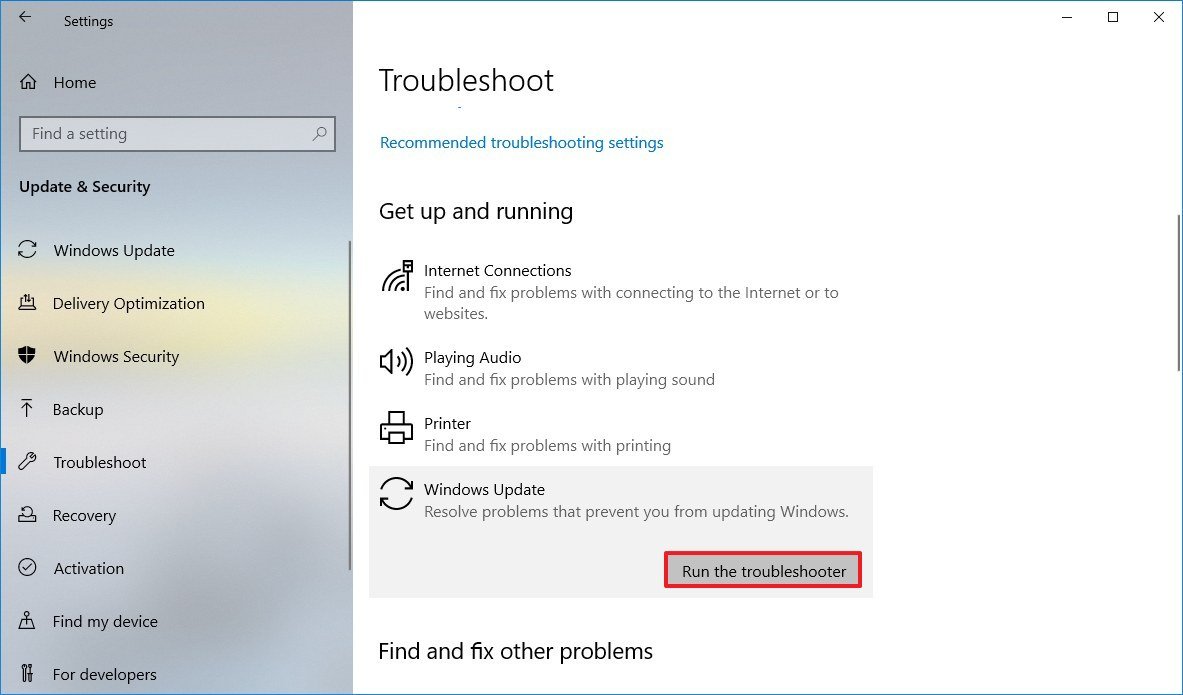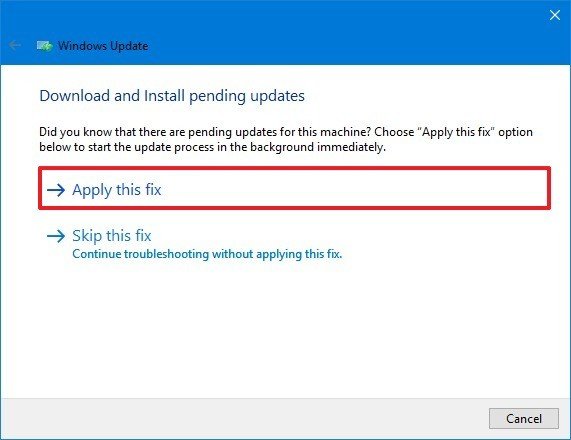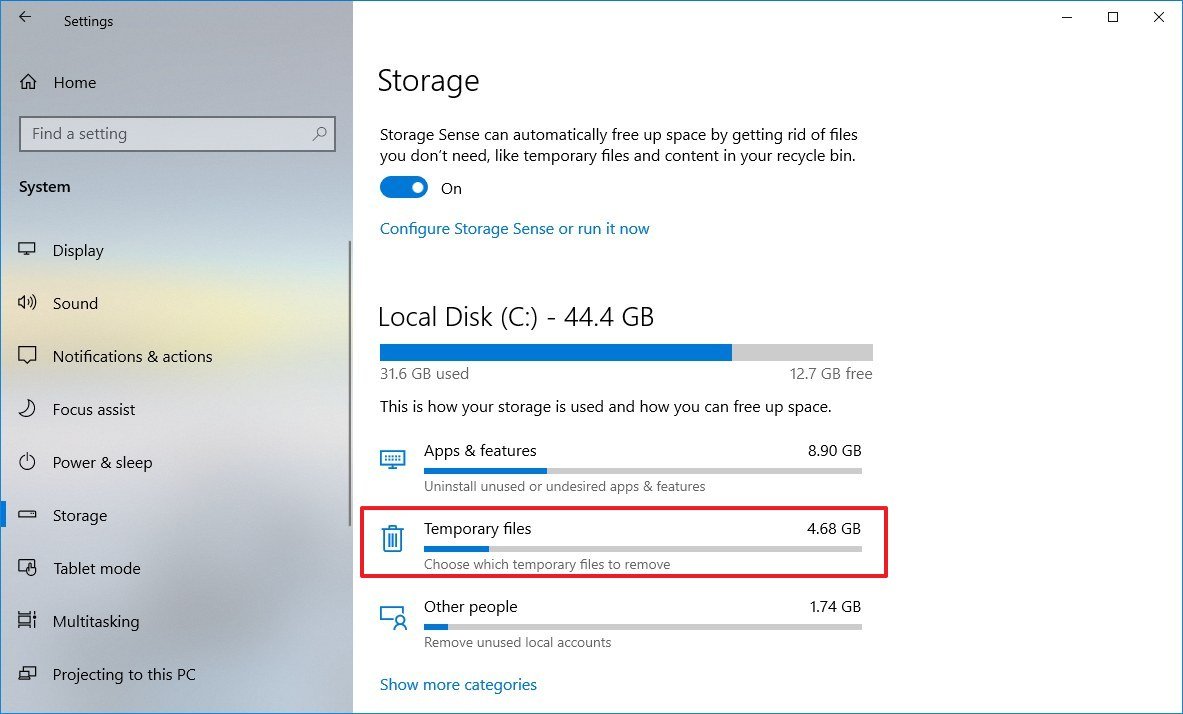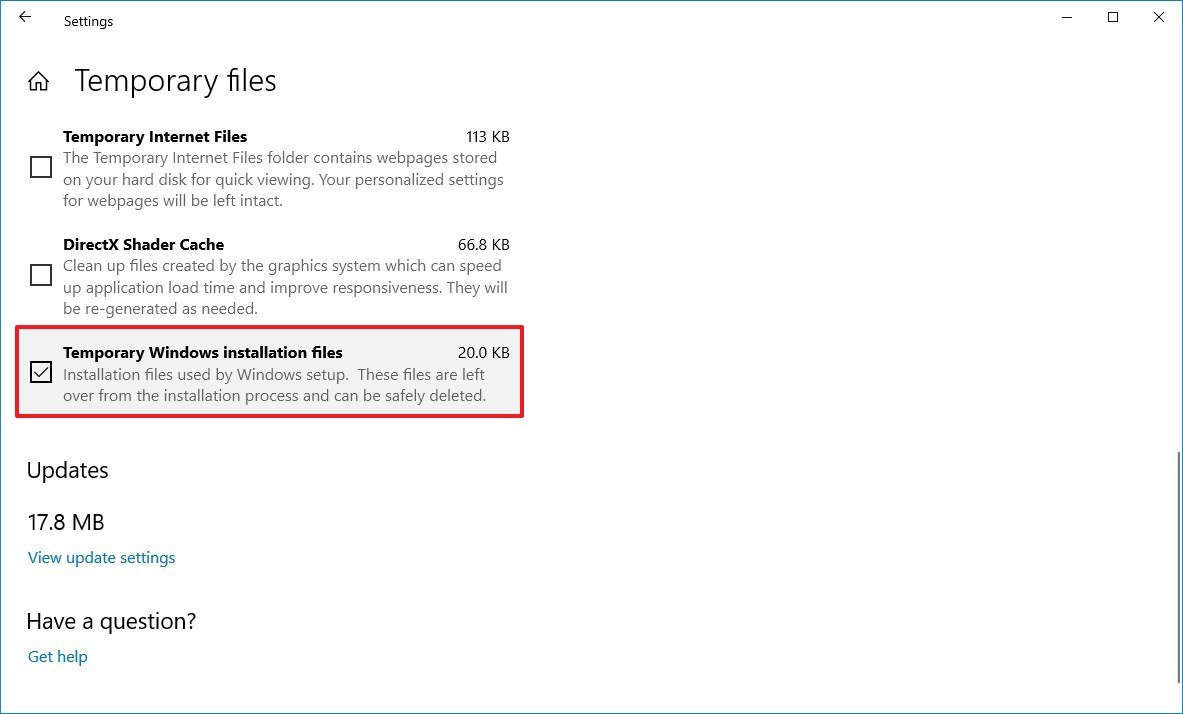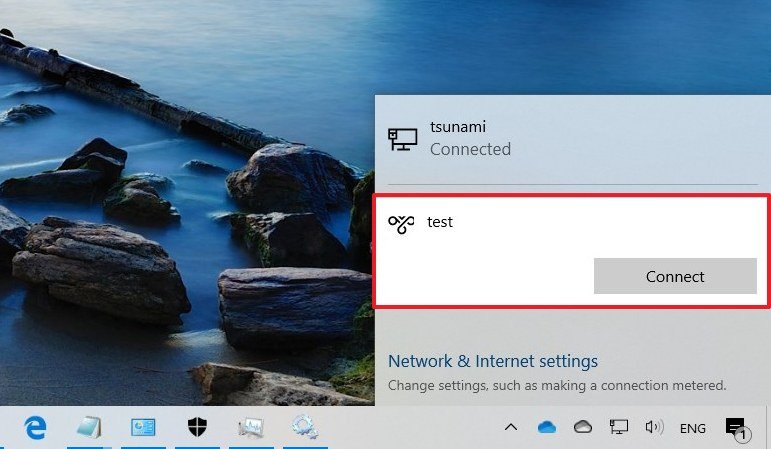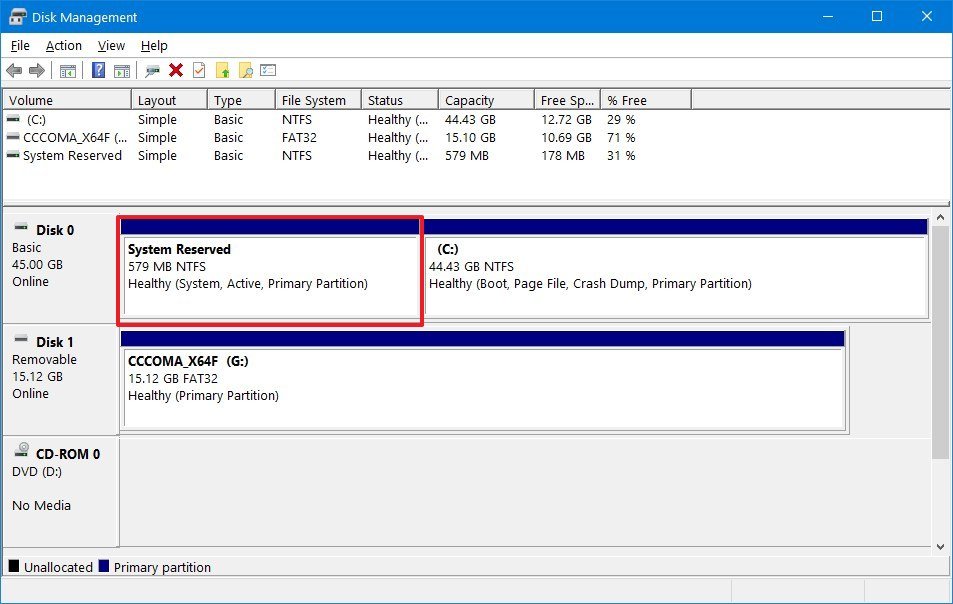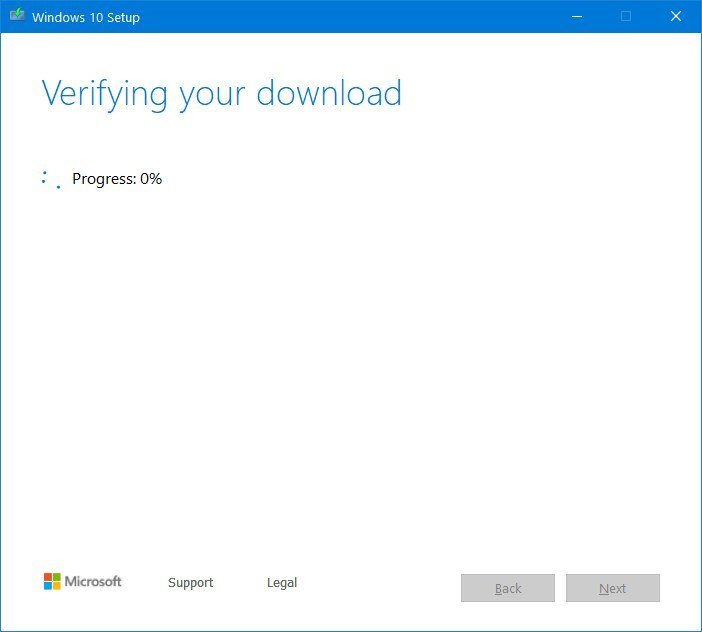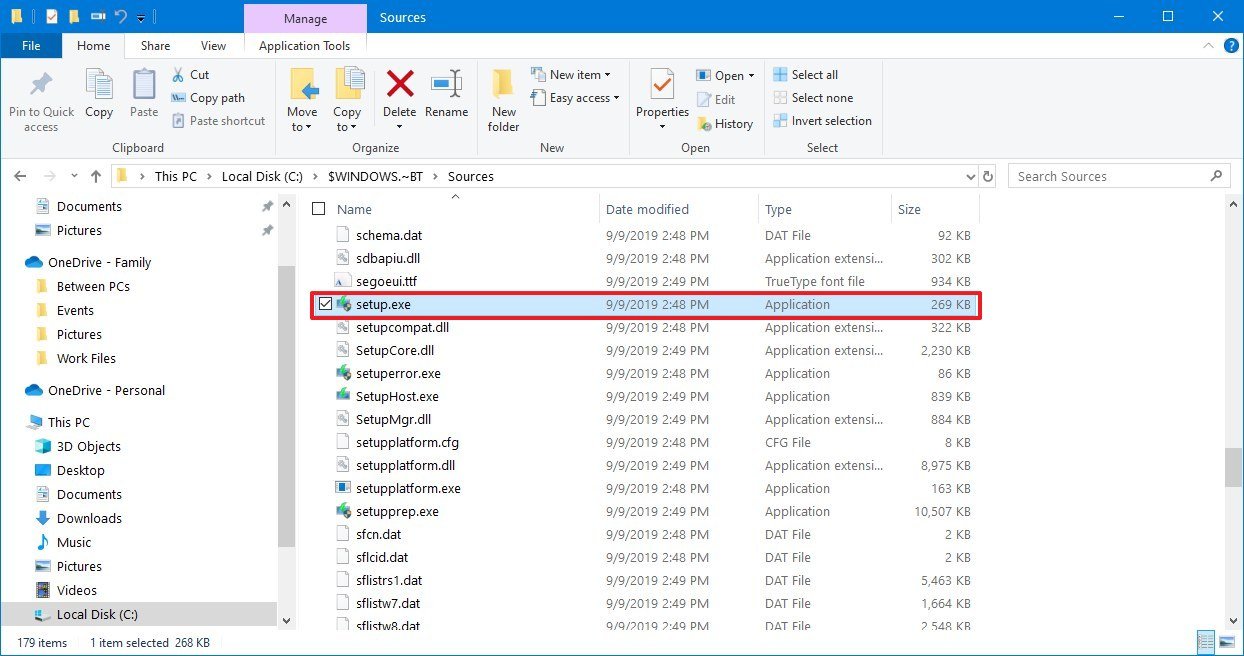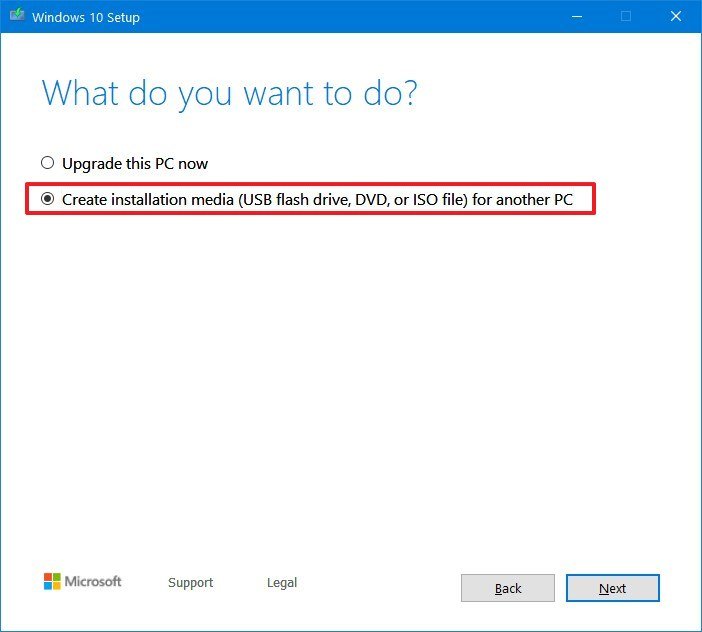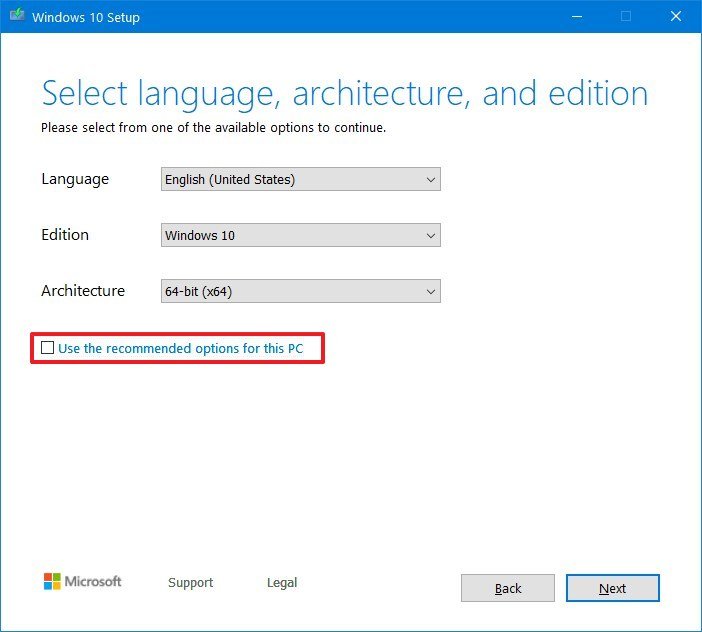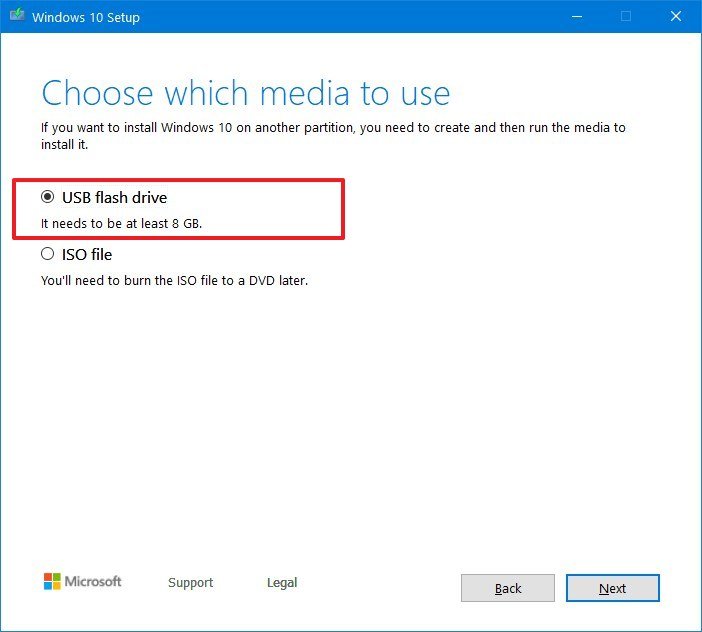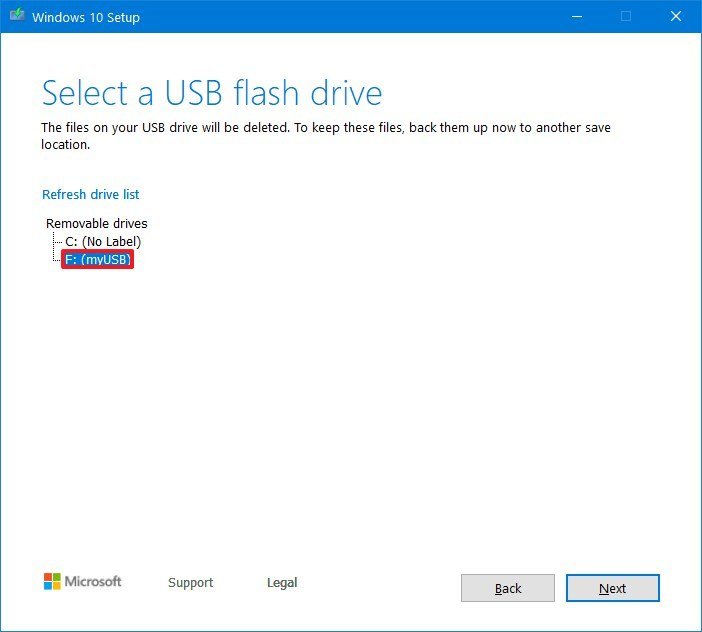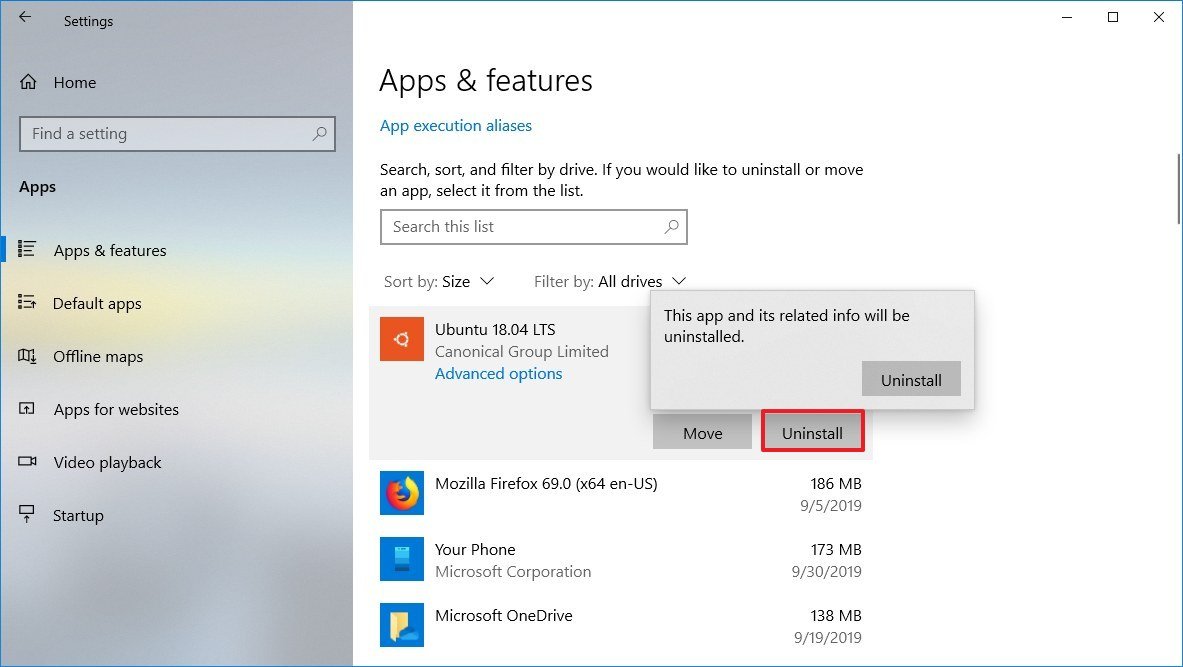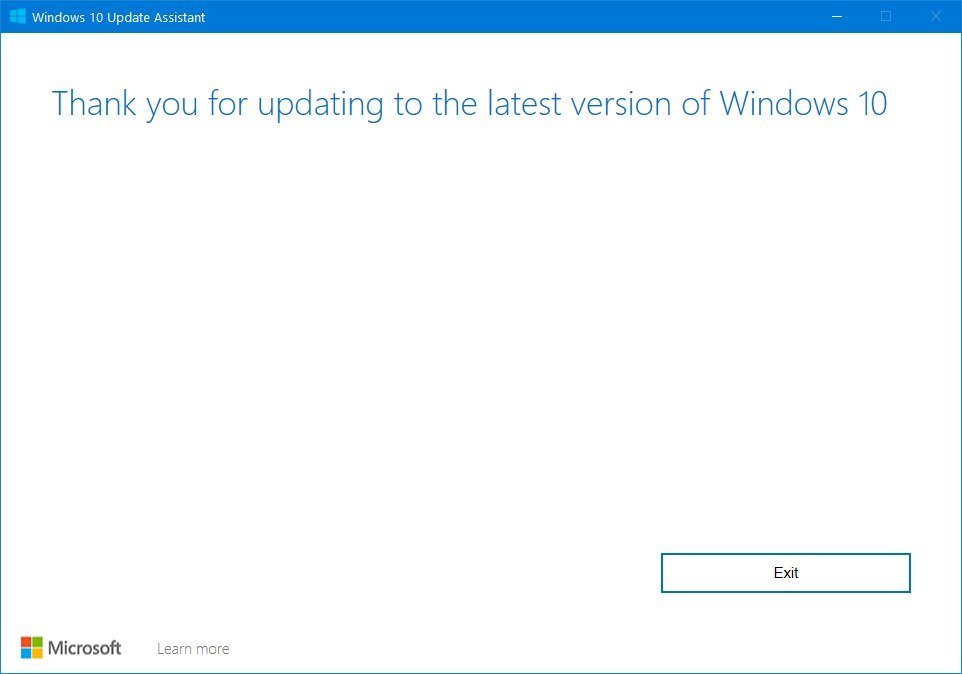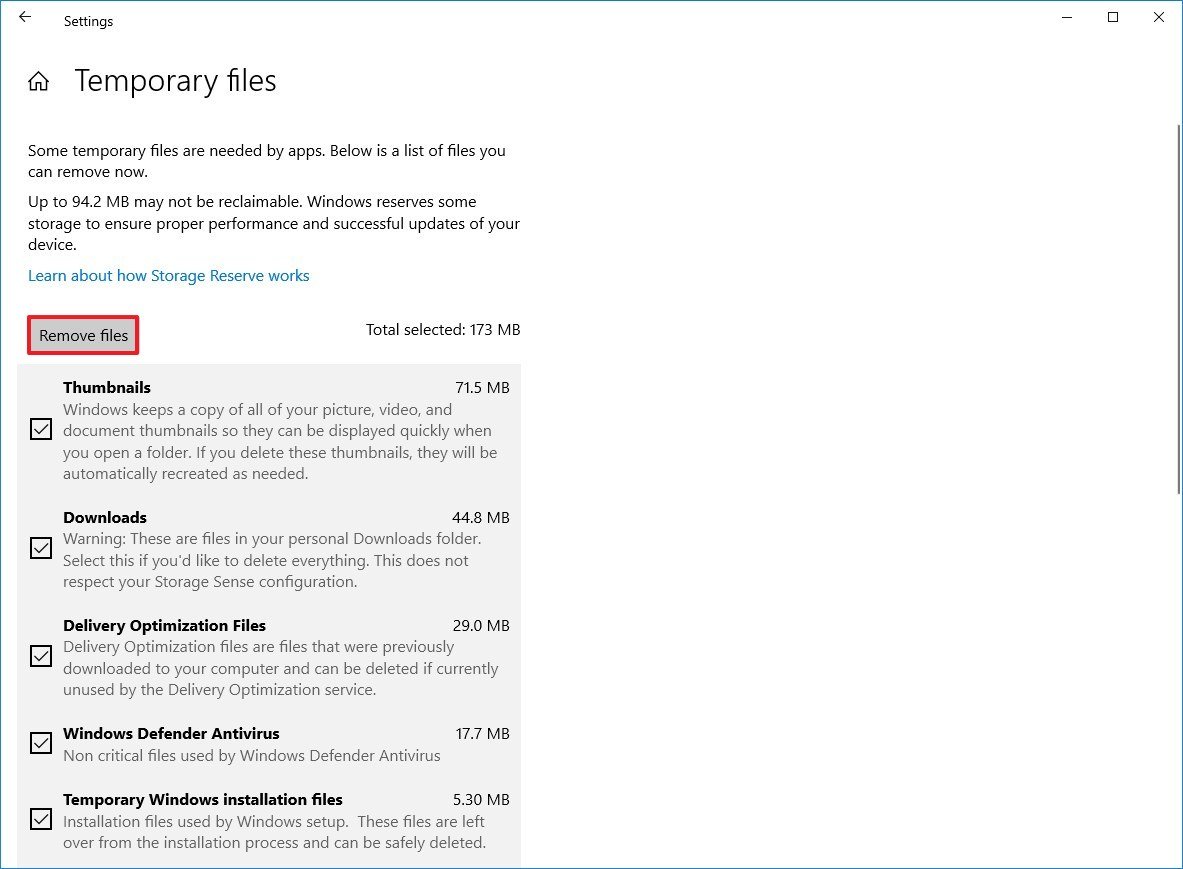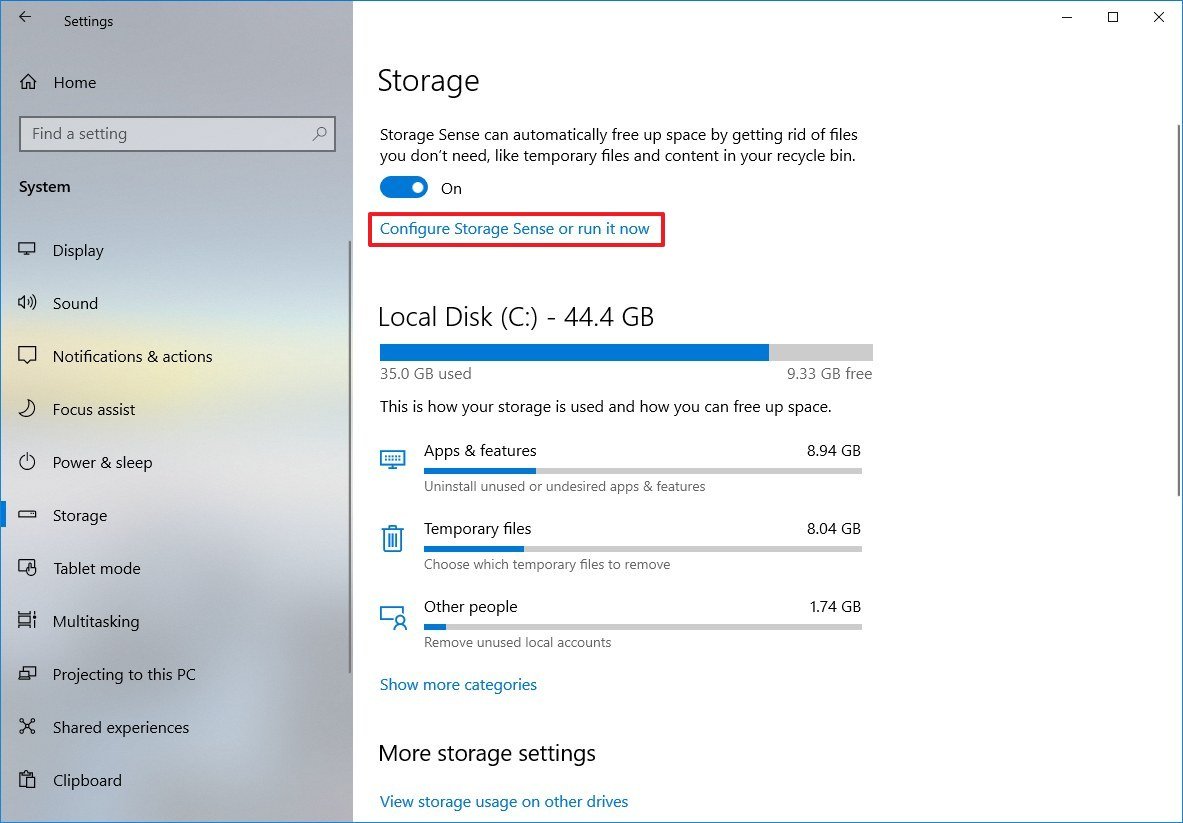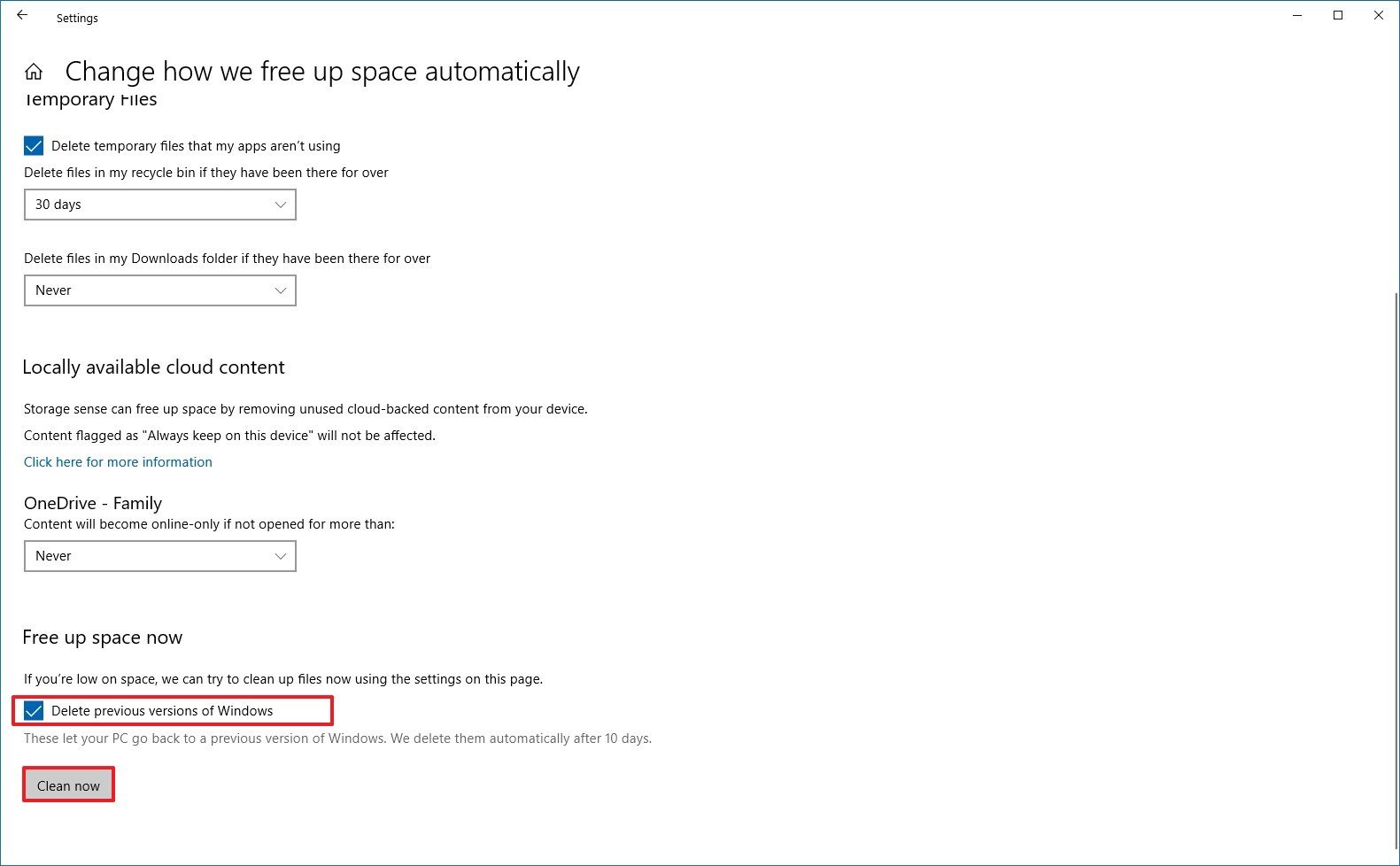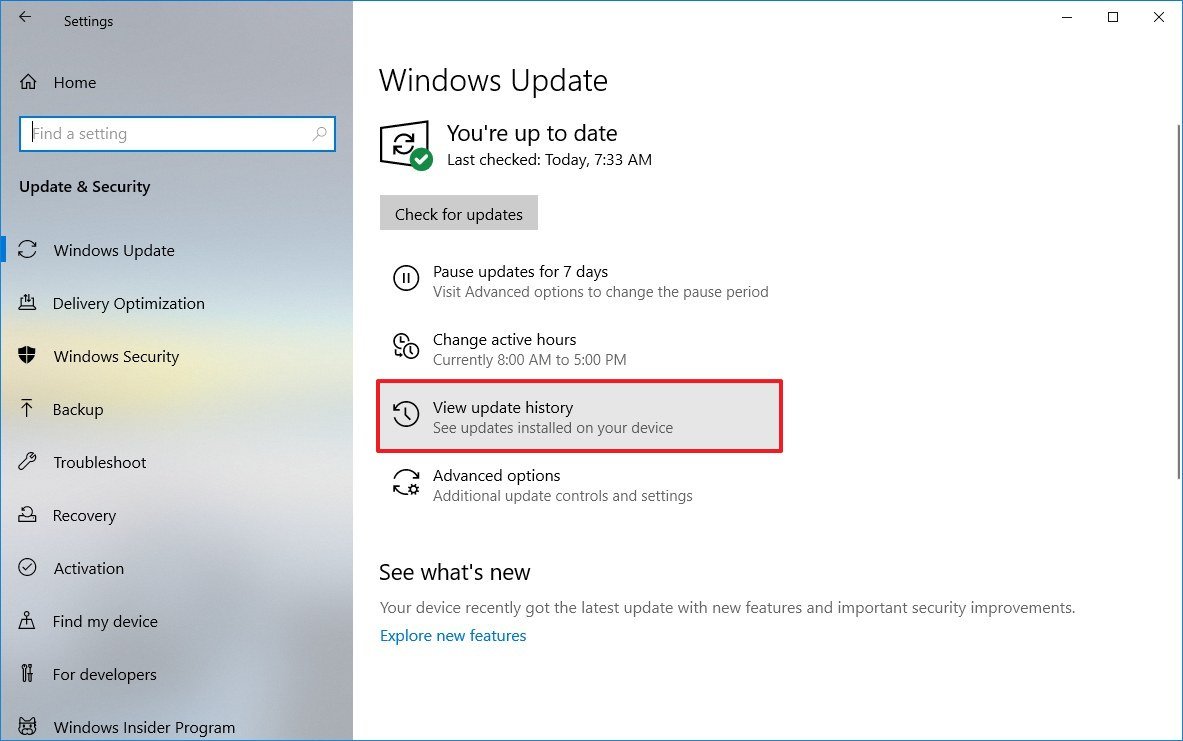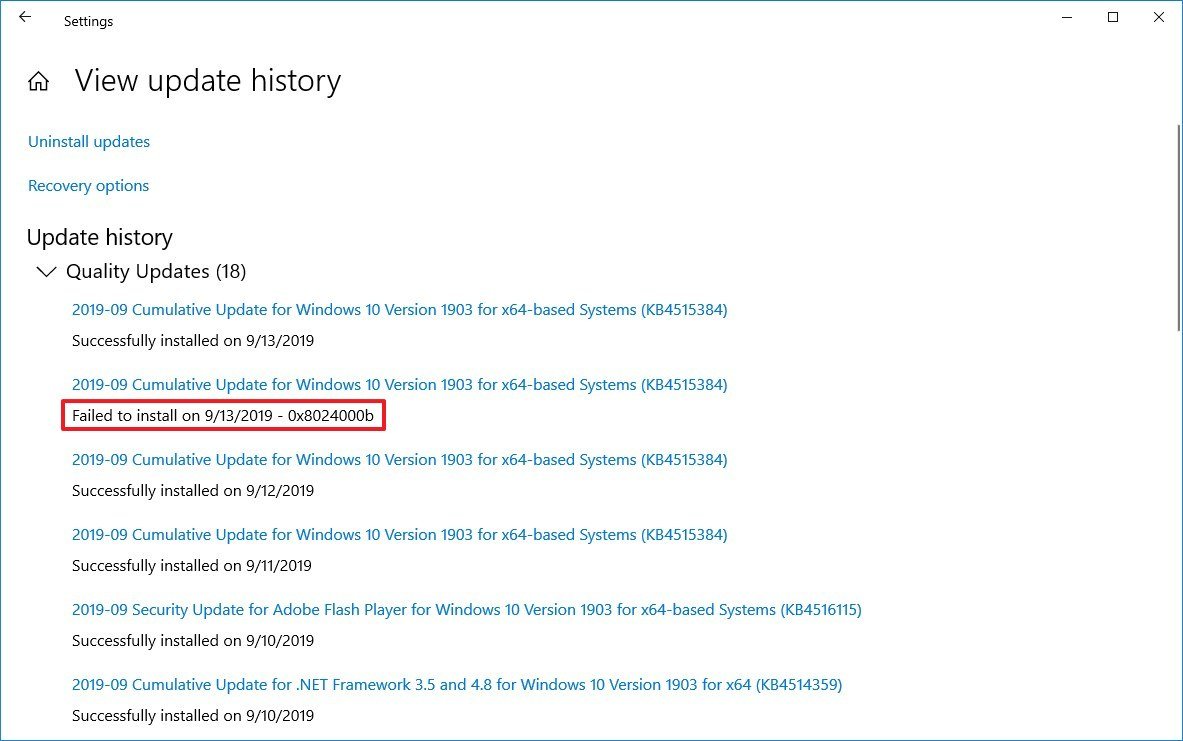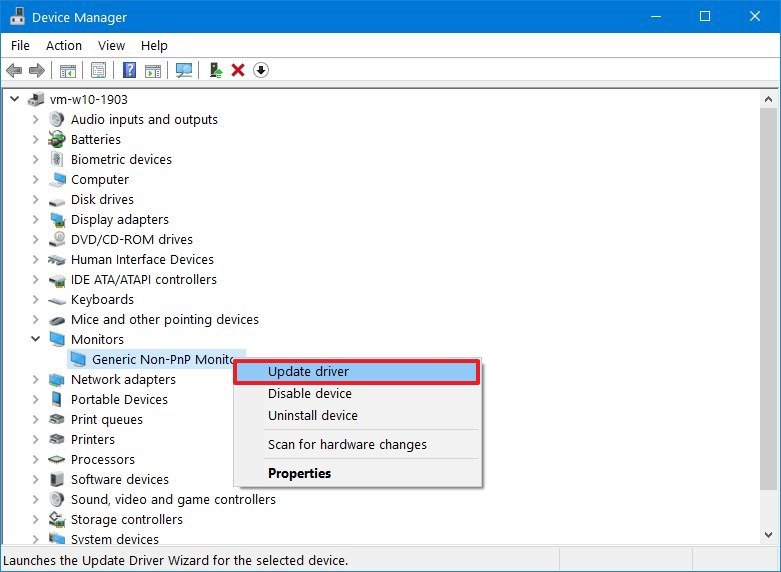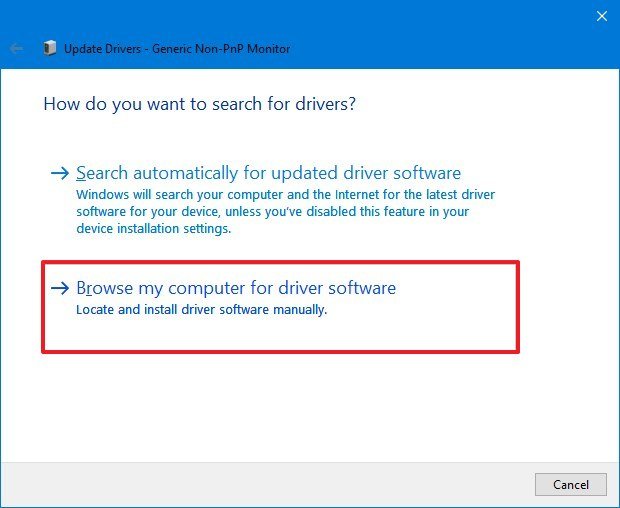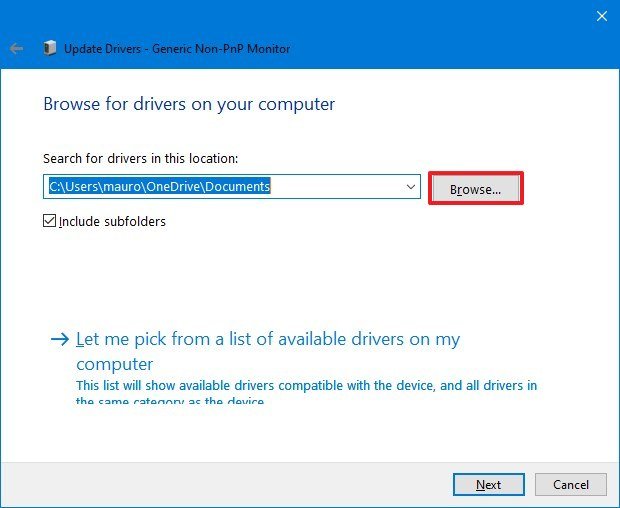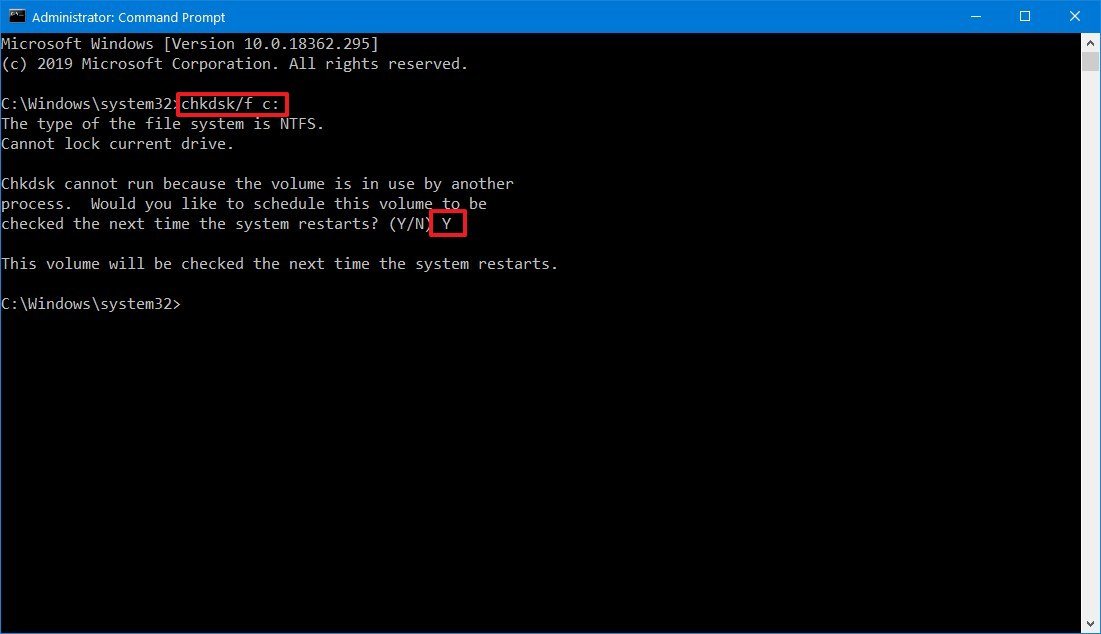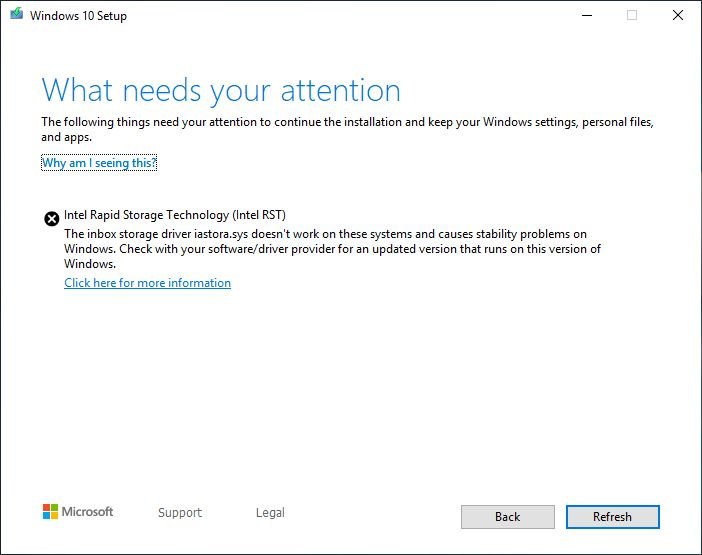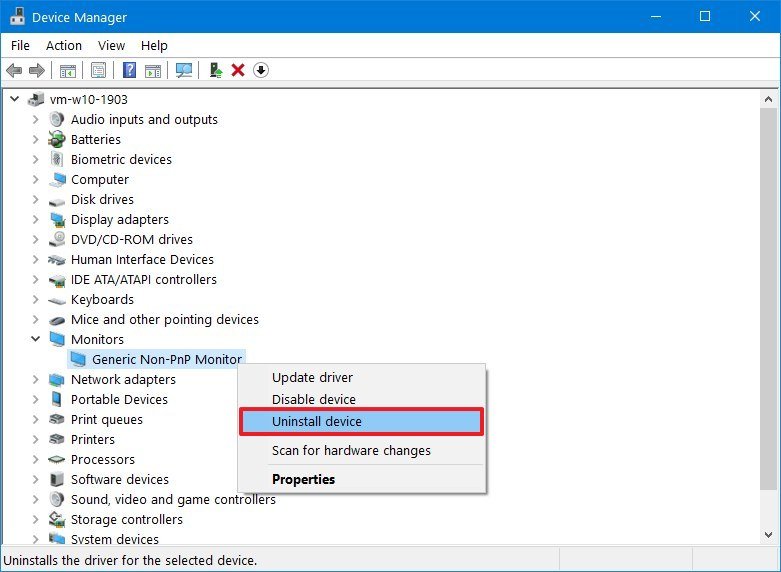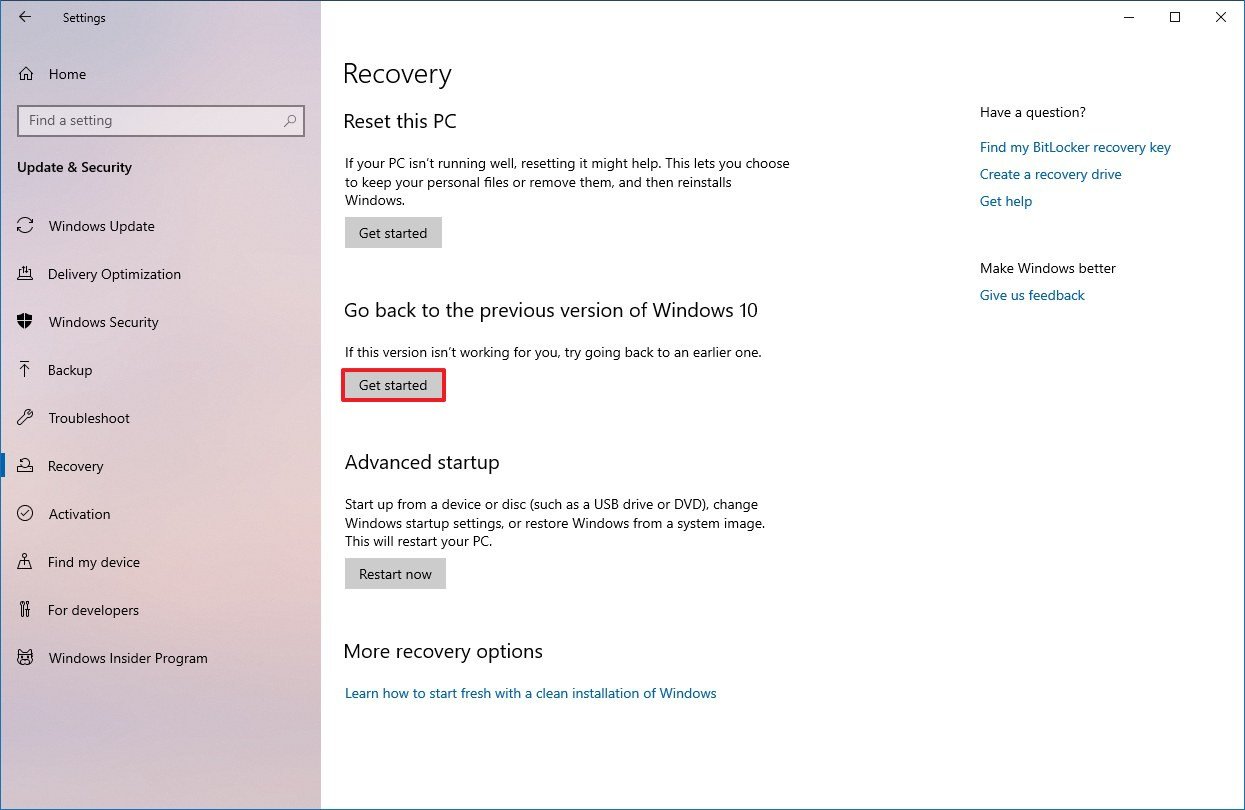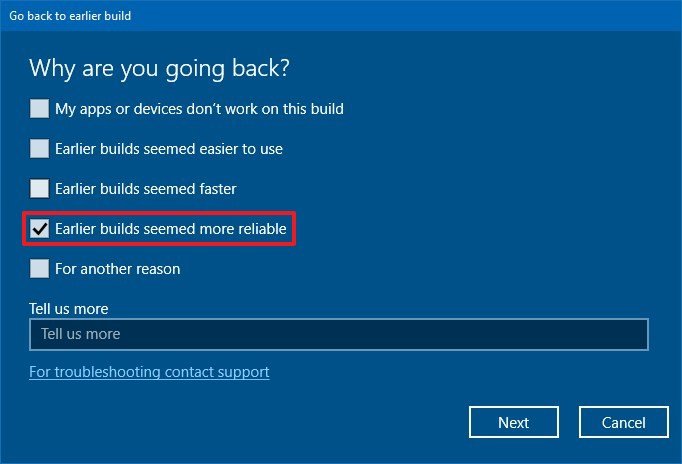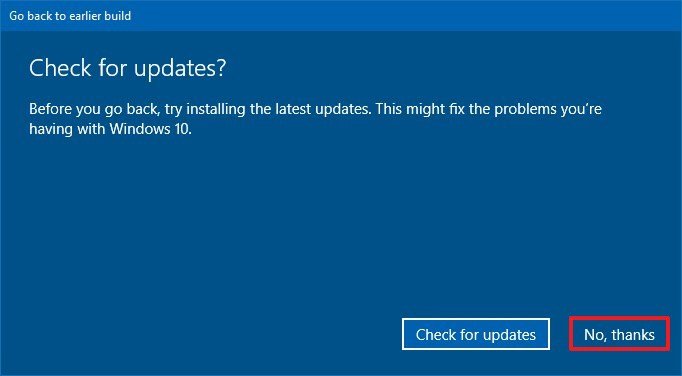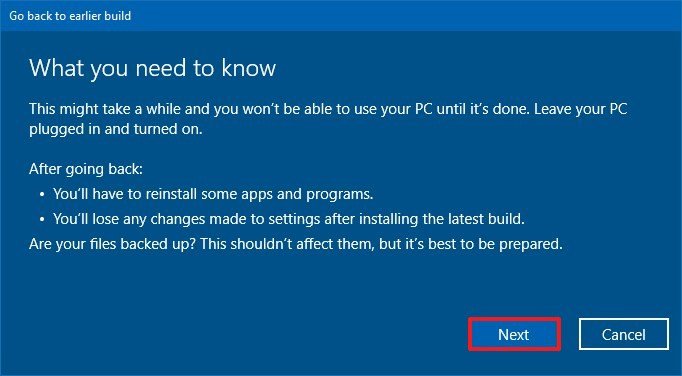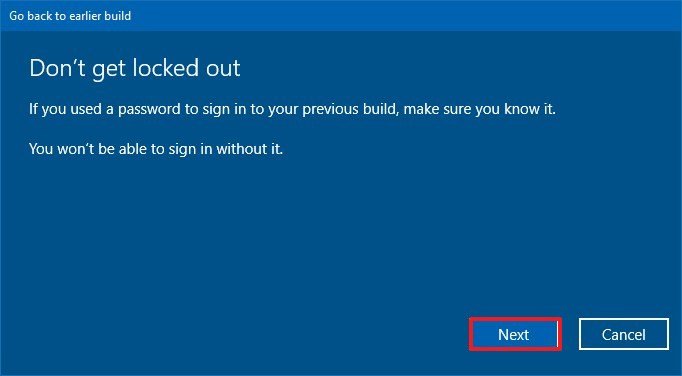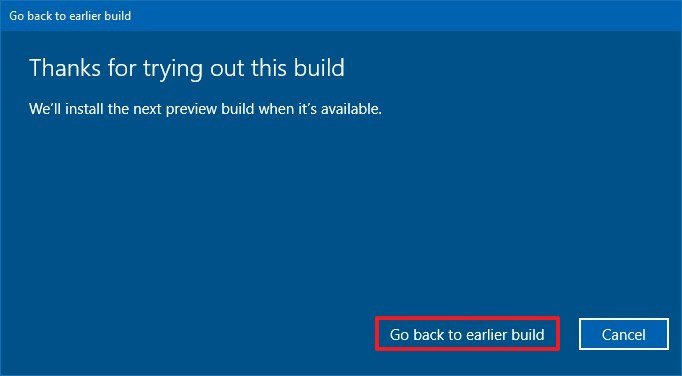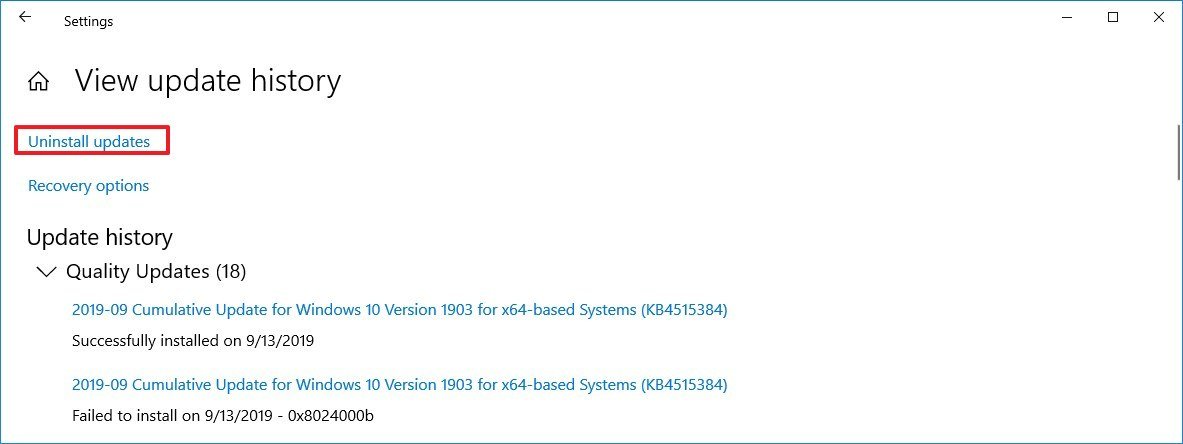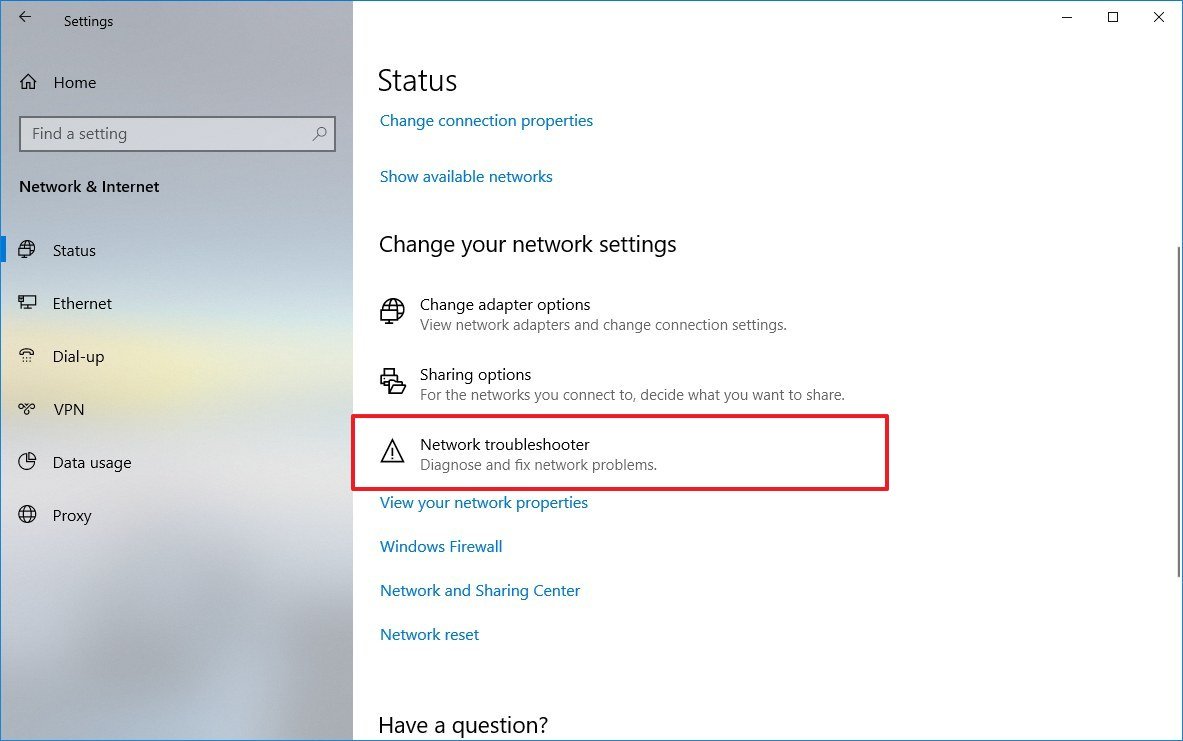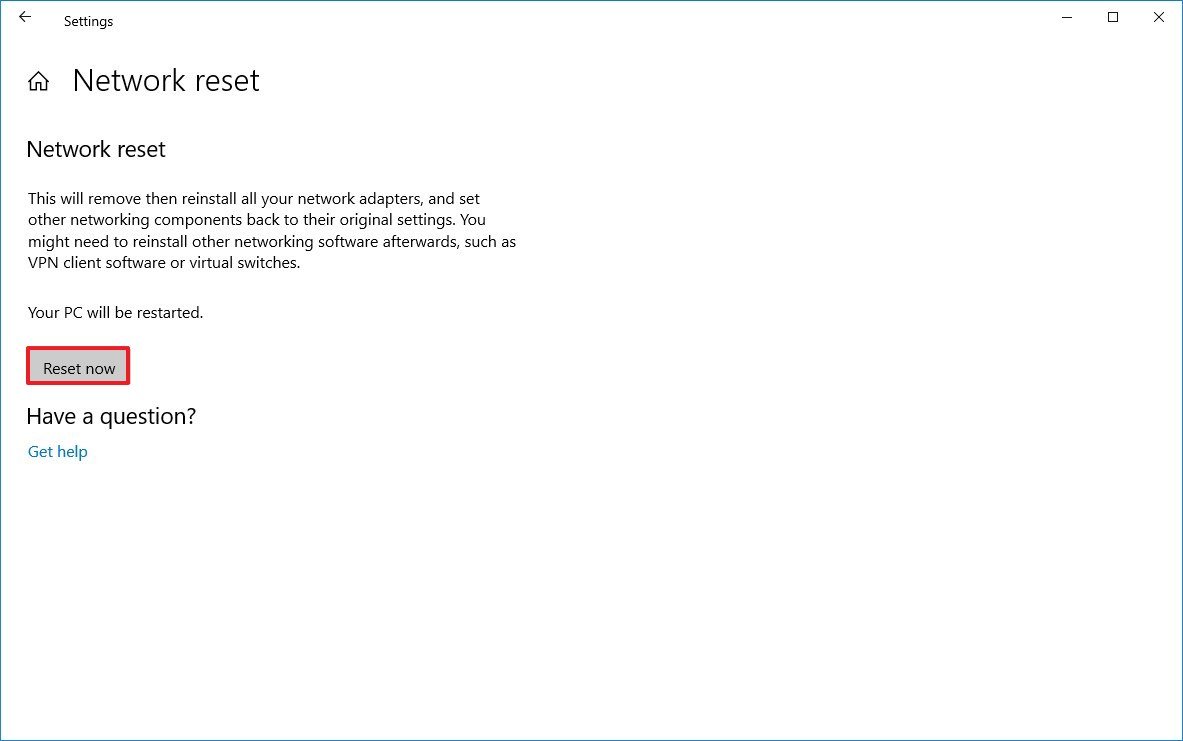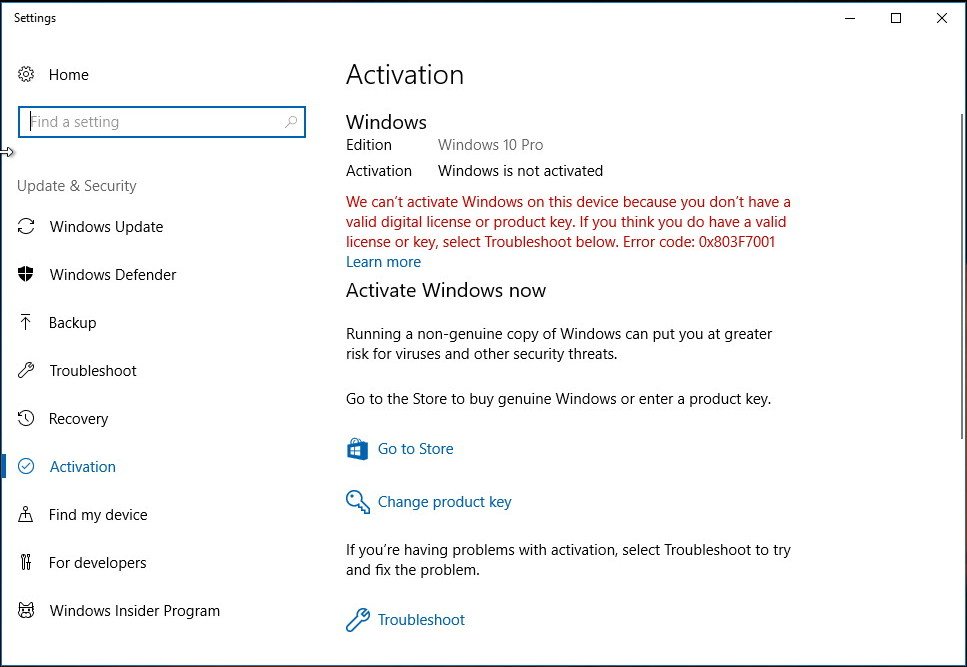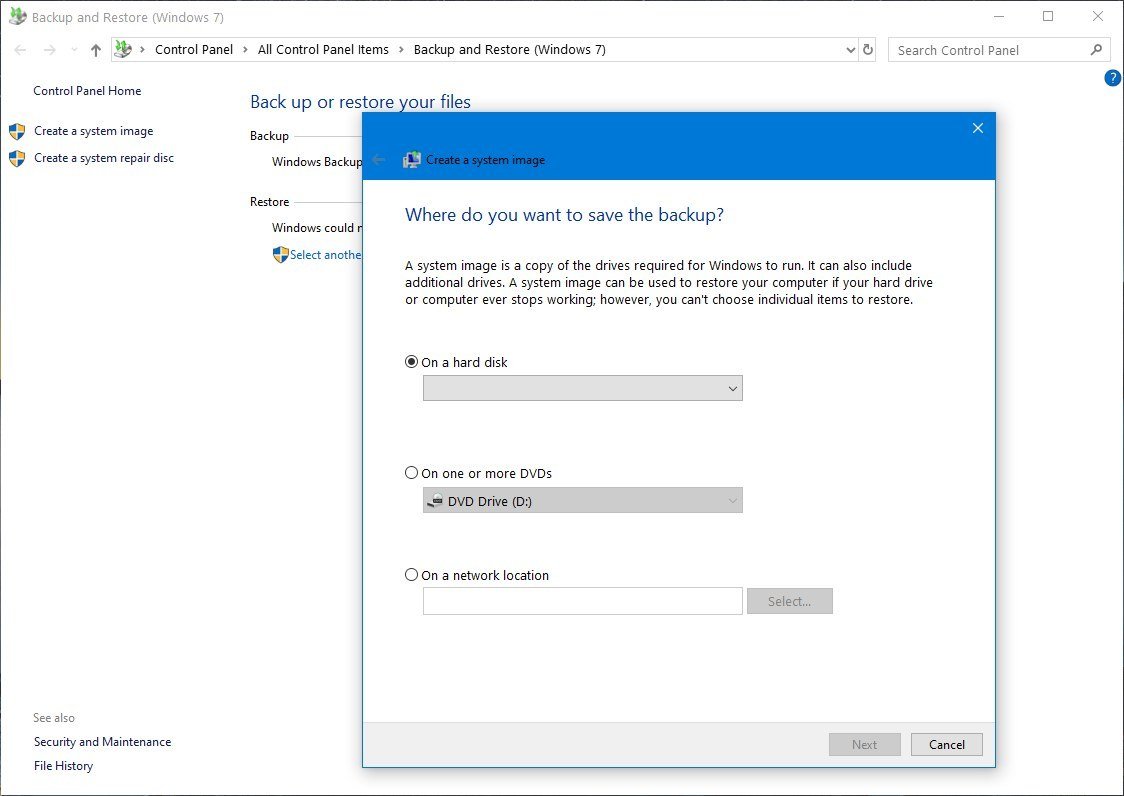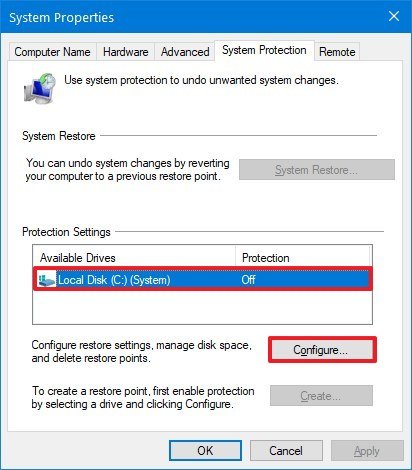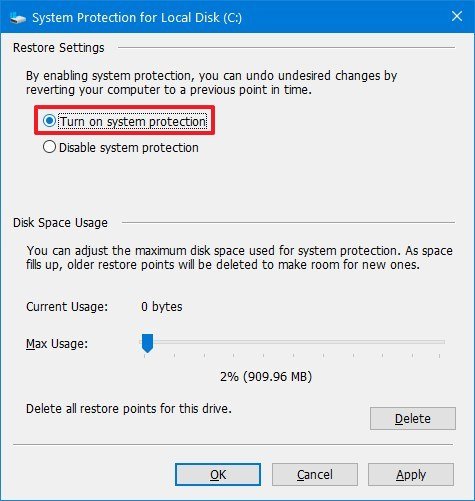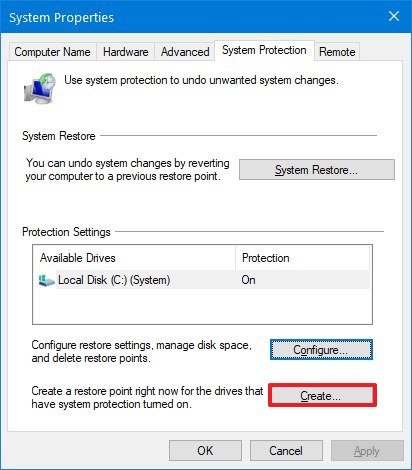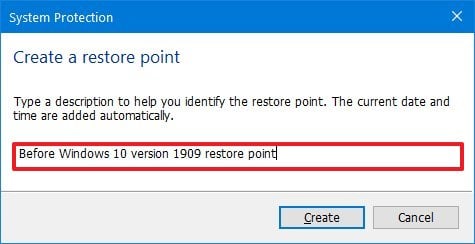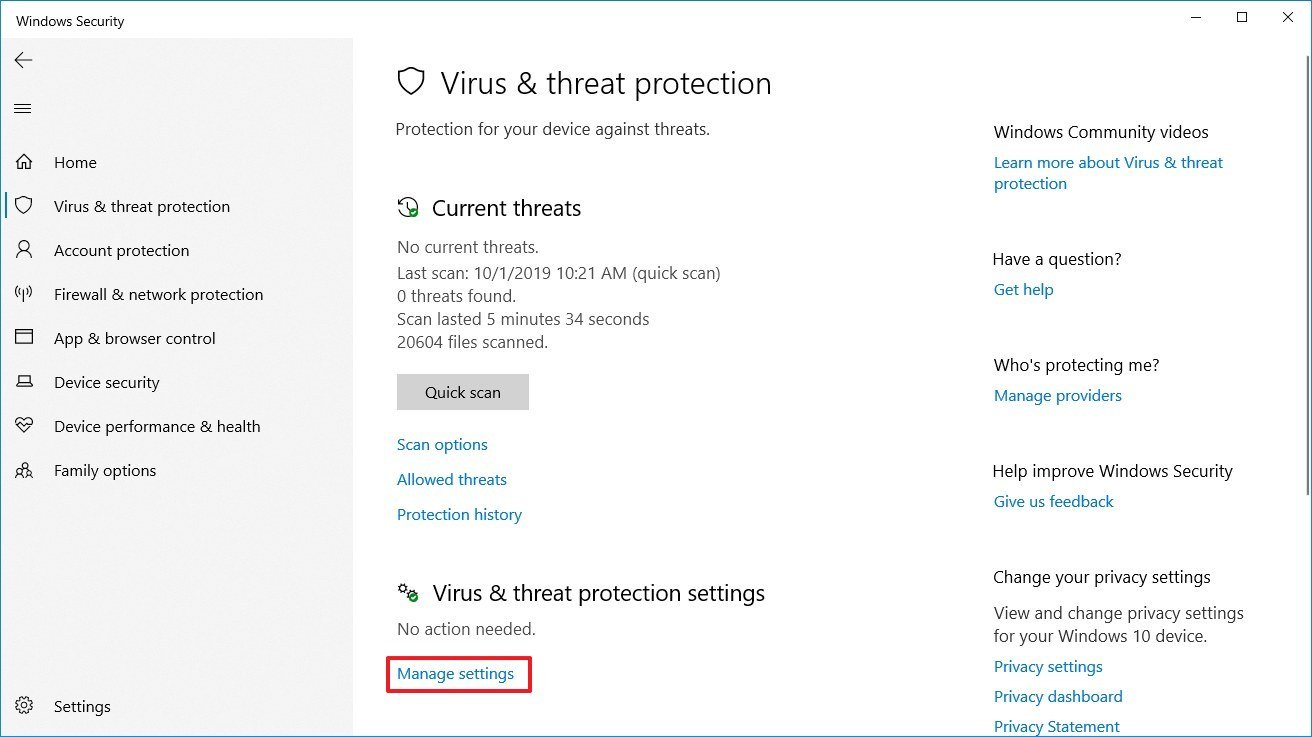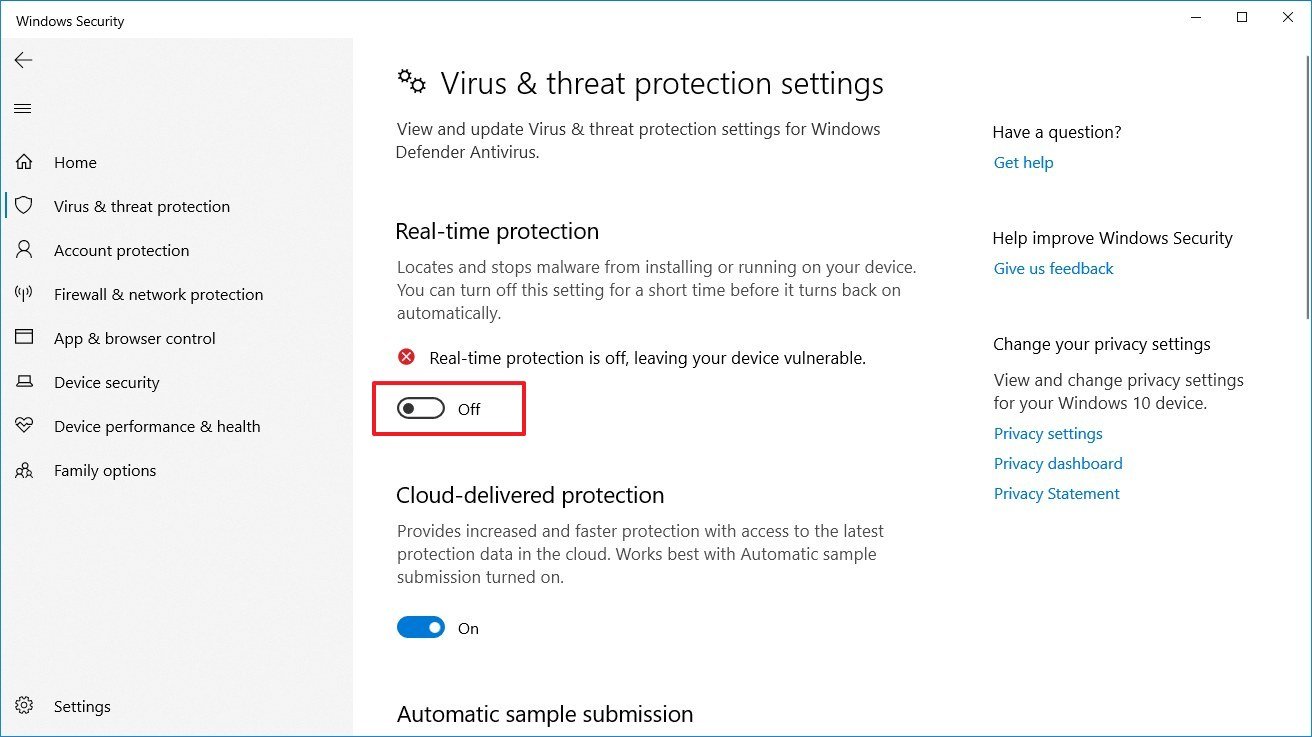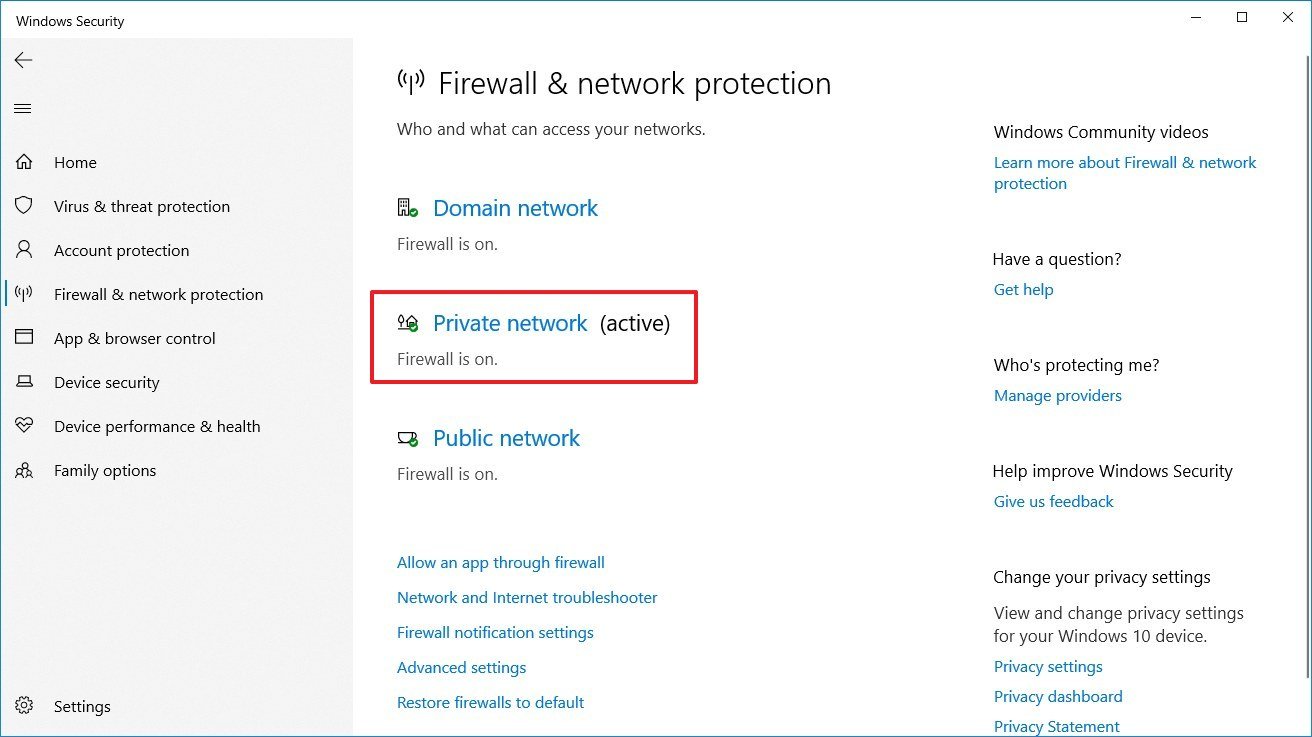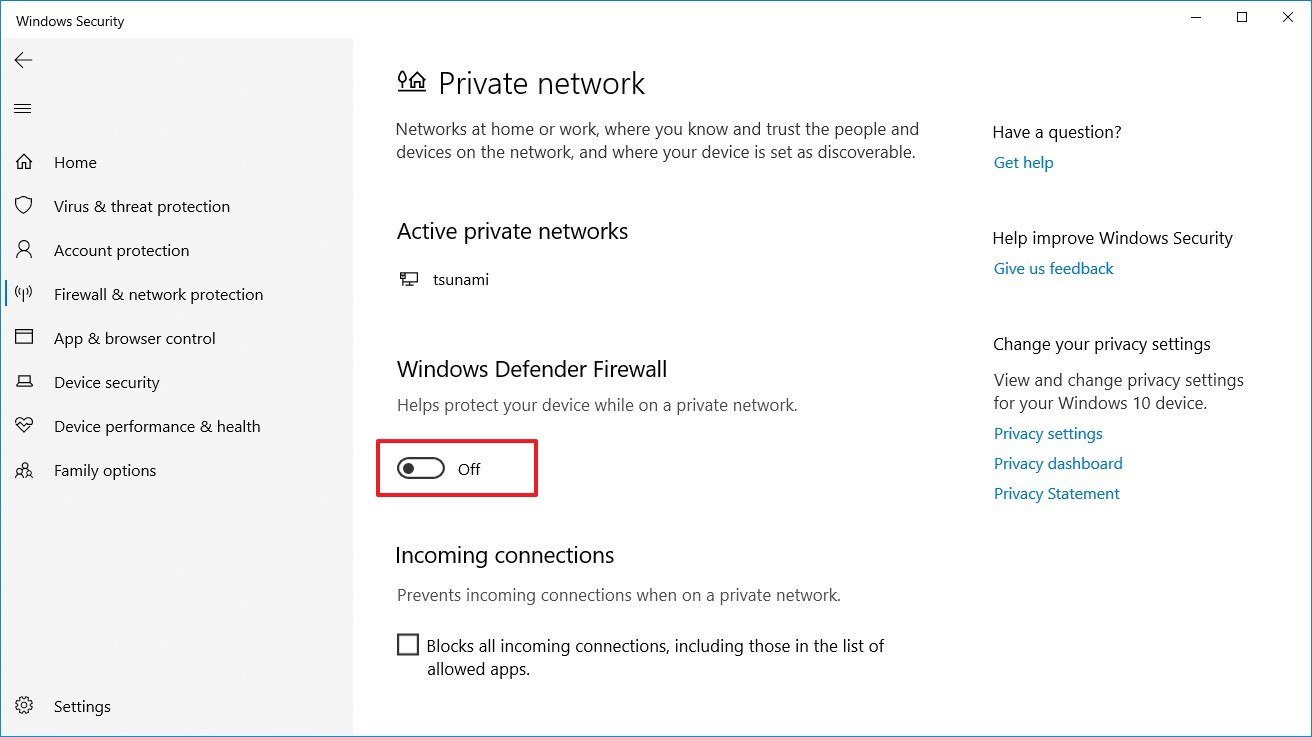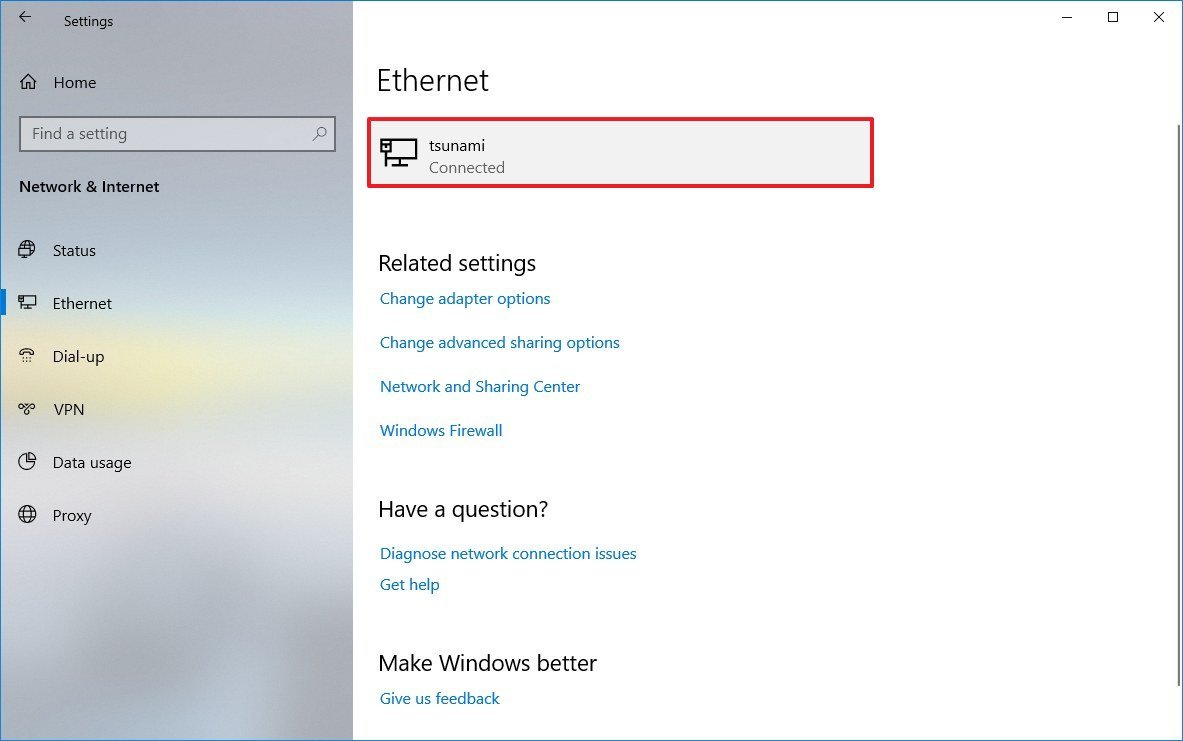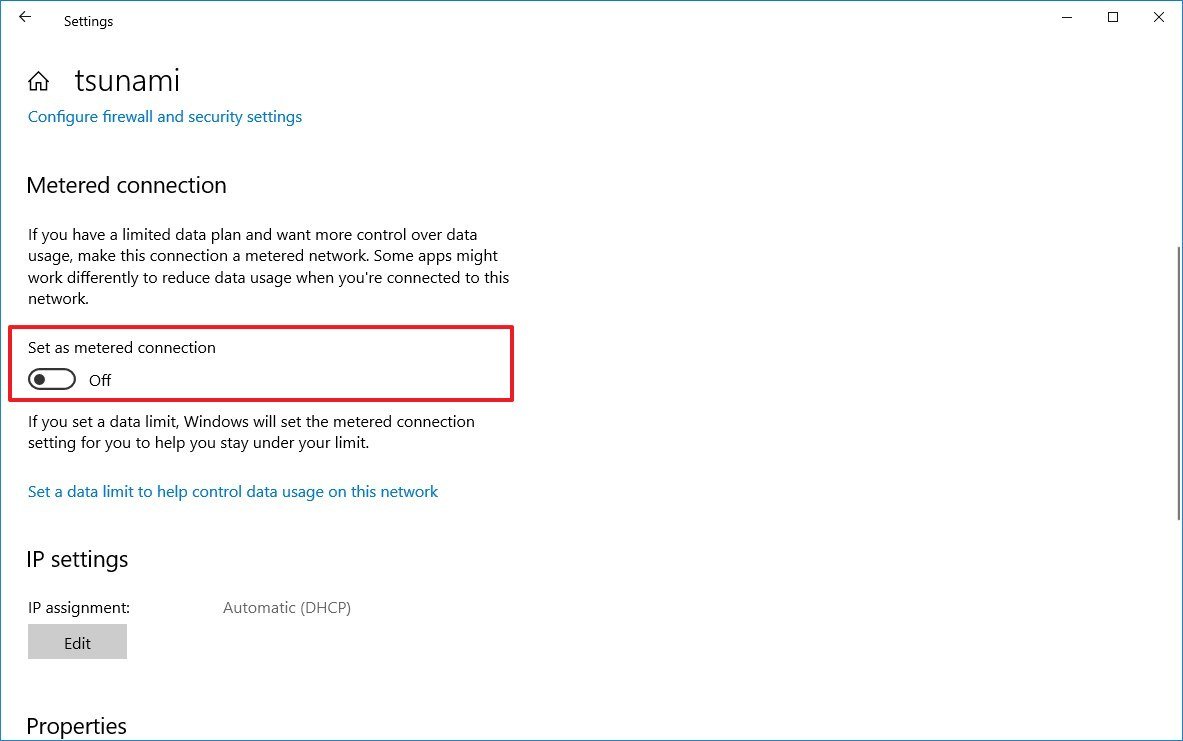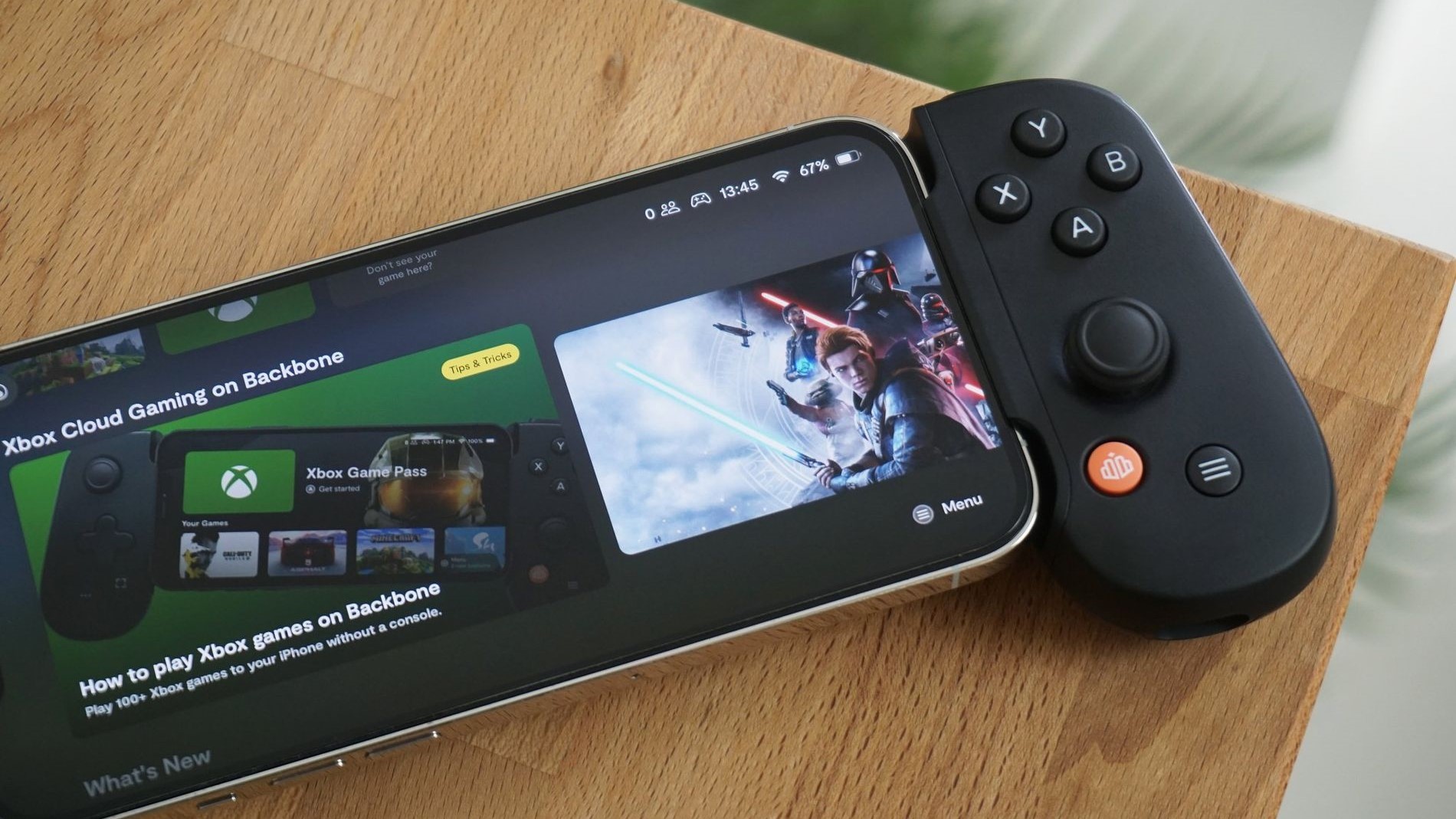Windows 10 November 2019 Update common problems and how to fix them
If you're experiencing any issues installing the Windows 10 November 2019 Update, this guide will help you to troubleshoot and fix virtually any problem.
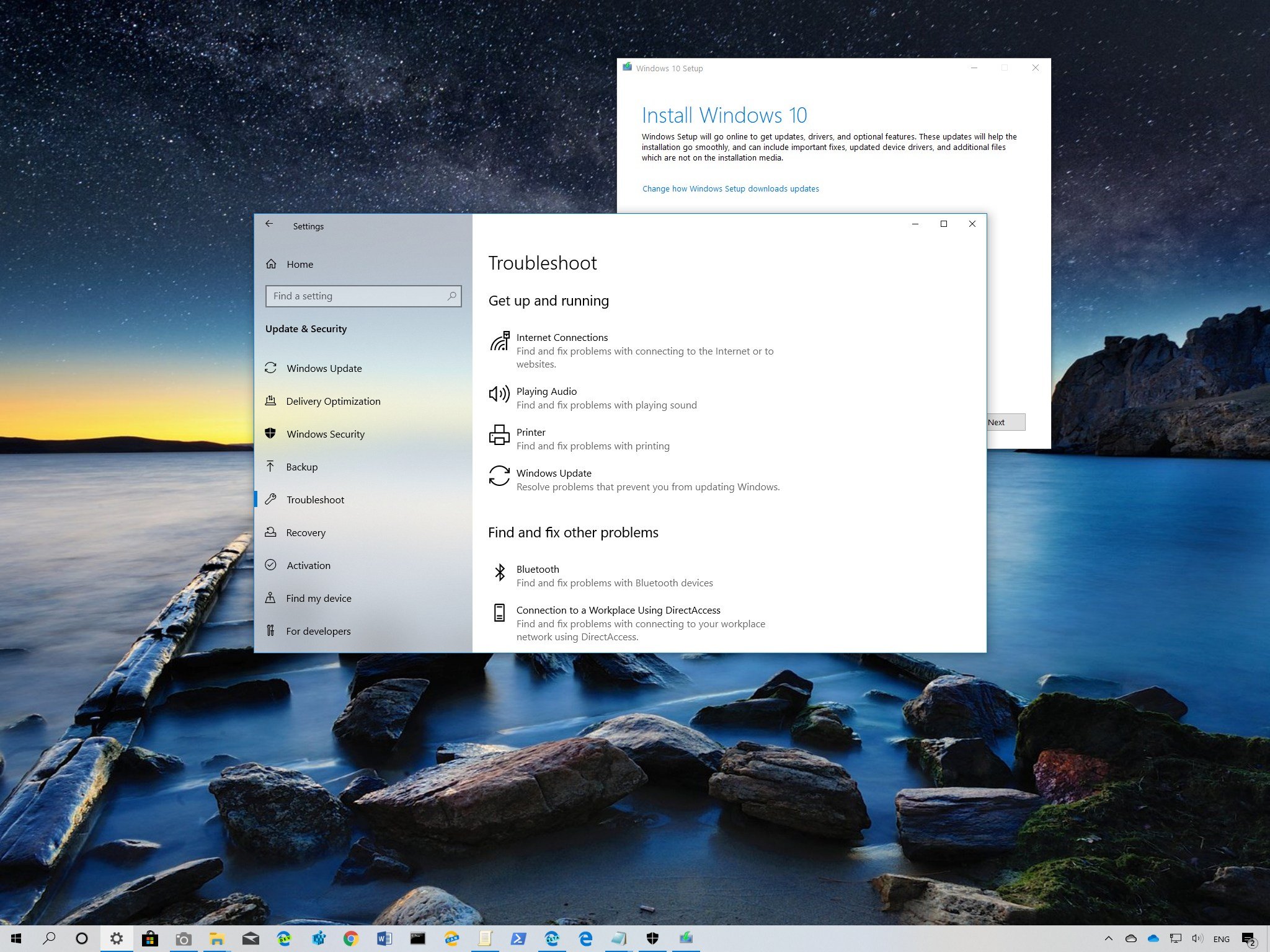
The November 2019 Update for Windows 10 (version 1909) is now available for download with several new changes to improve the work that Microsoft has included with the May 2019 Update (version 1903). This is the eighth major refresh since the original release, and it's the second semi-annual update for 2019.
Check out our in-depth Windows 10 November 2019 update reivew
Although this new version is a minor update, and it'll be offered as a cumulative update for devices already using version 1903, there are still chances of running into problems during and after the installation. Even more on devices still running an older version (such as the October 2018 Update), which still requires full reinstallation and can result in unexpected hiccups.
Also, many of the issues upgrading aren't problems with the new version. Typically, the reason for an update failure is because of outdated drivers, incompatible programs, custom configurations, and hardware related issues.
Black Friday buyer's guide: Best deals on the best Windows laptops
In this Windows 10 guide, we'll dive into the problems you may encounter installing the November 2019 Update, and the steps to fix them to get up an running in no time.
Get help to fix issues upgrading to Windows 10 November 2019 Update
Super important — When moving to a new version of Windows 10, it's possible to run into two types of problems. You could see errors that are common during and after an upgrade (such as issues with Windows Update, storage, activation, etc.), which are not necessarily problems with the November 2019 Update directly.
All the latest news, reviews, and guides for Windows and Xbox diehards.
Then, there are those issues that may appear because of bugs with the feature update. Usually, these problems can include errors during the installation that can result from an outdated driver, compatibility with a particular app, third-party security solution, and many others.
In this guide, we'll look into the different ways that you can resolve both types of issues, whether you're installing the feature update on a device already running the May 2019 Update or an older version using Windows Update, Media Creation Tool, or Update Assistant.
- How to fix unexpected errors installing the November 2019 Update using Windows Update
- How to fix error 0x80073712 installing the November 2019 Update using Windows Update
- How to fix error 0x800F0922 downloading the November 2019 Update using Windows Update
- How to fix errors installing the November 2019 Update using Media Creation Tool
- How to fix issues installing the November 2019 Update using USB bootable media
- How to fix error 0x8007042B or 0x800700B7 installing the November 2019 Update using Windows Setup
- How to fix Update Assistant stuck downloading Windows 10 November 2019 Update
- How to fix storage error 0x80070070 installing the November 2019 Update
- How to fix error 0xC1900107 starting upgrade of the November 2019 Update
- How to fix install completion problems with the November 2019 Update
- How to fix error 0x80070002 0x20009 installing the November 2019 Update
- How to fix driver error 0xC1900101 installing the November 2019 Update
- How to fix hardware error 0xC1900200, 0xC1900202, or 0x80300024 installing the November 2019 Update
- How to fix driver compatibility error 0x800F0923 installing the November 2019 Update
- How to fix app compatibility error 0xC1900208 installing the November 2019 Update
- How to fix black screen problems with the November 2019 Update
- How to fix networking problems with the November 2019 Update
- How to fix activation problems with the November 2019 Update
- How to fix accidental restart error 0x80200056 installing the November 2019 Update
- How to prepare to upgrade to Windows 10 November 2019 Update
How to fix unexpected errors installing the November 2019 Update using Windows Update
Although the easiest way to apply a new feature update is using Windows Update, this mechanism can also generate errors that prevent the device from installing the new version.
Usually, it's challenging to identify the root of the cause, but you can use the Windows Update troubleshooter to resolve the most common problems quickly.
To fix Windows Update to download the new feature update, use these steps:
- Open Settings.
- Click on Update & Security.
- Click on Troubleshoot.
- Under the "Get up and running" section, select the Windows Update option.
- Click the Run the troubleshooter button.
- Click the Apply this fix option (if applicable).Quick note: If you don't see the "Apply this fix" option, it doesn't mean that the troubleshooter didn't work. The tool will actually run an automated script to fix common problems, and if there's something else, you'll see the option to apply the fix.
- Continue with the on-screen directions.
- Restart your computer.
Once you complete the steps, use the Windows Update settings one more time to download and install the new feature update.
If you happen to see the error 0xc1900223, then there's a problem downloading the update, but in this case, there's nothing that you need to do. Windows Update will try to upgrade at a later time.
How to fix error 0x80073712 installing the November 2019 Update using Windows Update
When you see the 0x80073712 error message as you try to apply the November 2019 Update, then it means that the required files are either missing or damaged.
To fix this issue, use the Storage settings to delete the Windows Update temporary files using these steps:
- Open Settings.
- Click on System.
- Click on Storage.
- Under the "Local Disk" section, click the Temporary files option. (If you're running version 1809, then click the Free up space now option.)
- Clear the current selections.
- Check the Temporary Windows Installation files or Windows Setup temporary files item.
- Click the Remove files button.
Once you complete the steps, use the Windows Update settings one more time to apply version 1909.
If you keep getting the same error, or other errors like 0x80245006 or 0x80190001, then use the Media Creation Tool and proceed with a clean installation of the latest version of Windows 10.
How to fix error 0x800F0922 downloading the November 2019 Update using Windows Update
When using Windows Update, you may also receive error 0x800F0922, which means that the computer can't reach the download servers, or the System Reserved partition doesn't have enough space.
Closing VPN connection
If you see the error 0x800F0922 as you try to download version 1909, then there's a chance that you're using a VPN connection.
To start the upgrade process, disconnect from the VPN server using these steps:
- Click the network icon in the taskbar.
- Select the VPN connection.
- Click the Disconnect button.
The above steps will disconnect you from a remote session when using the default VPN client on Windows 10. If you're using another client, then check your software support website for more specific details.
Resizing System Reserved partition
Sometimes third-party security solutions (such as antivirus) store data in the System Reserved partition preventing the installation of a new version of Windows 10.
If this is your case, you may need to use a third-party tool to resize the partition to make equal or larger than 500MB. Alternatively, you choose to perform a clean installation with version 1909, which it'll not only fix the problem, but you'll start with a new fresh installation of Windows 10 that can improve performance and resolve other issues.
How to fix errors installing the November 2019 Update using Media Creation Tool
Although the Media Creation Tool is a handy utility to perform a fresh as well as a clean installation of the latest release of Windows 10, sometimes, it may run into issues that will prevent the update from initializing.
Fixing Media Creation Tool stuck downloading updates
As part of the Windows 10 upgrade process, the Media Creation Tool downloads the installation files as well as any available cumulative update to ensure the most up-to-date version is applied to your device.
The only caveat is that sometimes, the tool might end up stuck trying to download additional updates, which will prevent the installation from proceeding.
If the tool stays on the "Getting updates" stage for a very long time, you can use these steps to continue with upgrade:
- Close the Media Creation Tool.
- Relaunch the tool.
- As soon as the installation files finish downloading, unplug the network cable from your computer or disconnect from the wireless network.
Once you complete the steps, the Media Creation Tool will time out the update step, and continue with the setup process.
Fixing Media Creation Tool won't start setup
In the case that the Media Creation Tool is stuck downloading the new installation files, you may need to start the upgrade process manually using these steps:
- Open File Explorer.
- Browse to the following path:
C:\$Windows.~BT\Sources - Double-click the Setupprep.exe file to launch the setup wizard.
After you complete the steps, the device should be able to continue with the upgrade process to the November 2019 Update.
In the case that you're still dealing with the same problem, then you should upgrade using the Update Assistant.
How to fix issues installing the November 2019 Update using USB bootable media
If the device is failing to install the Windows 10 November 2019 Update using a USB bootable media, then it's likely that some of the files are missing or damaged on the flash drive. You can get around this problem, using the Media Creation Tool to create the bootable media one more time.
To create a Windows 10 USB bootable media, use these steps:
- Open this Microsoft support website.
- Under the "Create Windows 10 installation media" section, click the Download tool now button.
- Save the installer on your device.
- Double-click the MediaCreationTool1909.exe to start the setup.
- Click the Accept button.
- Select the Create installation media (USB flash drive, DVD, or ISO file) for another PC option.
- Click the Next button.
- Select your language, architecture, and edition settings, if different from the default selection.
- Click the Next button.
- Select the USB flash drive option.
- Click the Next button.
- Select a removable drive from the list.
- Click the Next button.
- Click the Finish button.
Once you complete the steps, the tool will create a new media with fresh files that you can use to update your computer.
If the bootable media fails again, try the steps again, but from another computer.
How to fix error 0x8007042B or 0x800700B7 installing the November 2019 Update using Windows Setup
While installing Windows 10 version 1909 using the Update Assistant or Media Creation Tool to perform an in-place upgrade, you may come across error 0x8007042B 0x4000D or error 0x800700B7 0x2000A that will block the installation of the new feature update.
Typically, these errors messages appear when there's another process running in the background. For example, when your device is running a third-party antivirus or a particular program.
If you're performing an in-place upgrade, find and terminate the process or program, and proceed with the update one more time.
Alternatively, you can perform a clean boot of Windows 10 to start the upgrade, or you can temporarily remove the program in question.
To uninstall an app on Windows 10, use these steps:
- Open Settings.
- Click on Apps.
- Click on Apps & features.
- Select the app and click the Uninstall button.
- Continue with the on-screen directions.
After you complete the steps, you should be able to proceed with the upgrade. If you're removing a security software, make sure to reinstall it after the installation.
How to fix Update Assistant stuck downloading Windows 10 November 2019 Update
Microsoft also offers the Update Assistant as another tool to install feature updates when Windows Update doesn't work, but at times, the tool can experience cause issues as well.
Usually, problems with the Update Assistant are related to networking issues, which you can fix doing the following:
- Disconnect the network cable, or turn off your network connection. Wait 60 seconds, reconnect to the network, and restart the Update Assistant.
- Restart your computer, and then reopen the Update Assistant.
In the case that you still see the problem, then use the Media Creation Tool to upgrade your device to the November 2019 Update.
How to fix storage error 0x80070070 installing the November 2019 Update
As part of the minimum hardware requirements, Windows 10 requires 20GB of available space for reinstallation, or 32GB of space to perform a clean installation. If your computer doesn't meet the requirements, you're like to see error 0x80070070 – 0x50011, 0x80070070 – 0x50012, or 0x80070070 – 0x60000.
To get around this problem, you'll need to make more room on the drive by deleting junk and other files with these steps:
- Open Settings.
- Click on System.
- Click on Storage.
- Under the "Local Disk" section, click the Temporary files option. (If you don't see the option, click the Show more categories option.)
- Check the items to remove.Quick tip: You don't need to select the "Windows Setup temporary files" or "Windows ESD installation files" options as these are the files required to update your computer.
- Click the Remove files button.
After you complete the steps, you should be able to proceed with the installation of version 1909. However, if you continue without enough space, you may need to connect an external storage (such as a USB flash drive or external hard drive) with at least 16GB of space that the system can use as temporary storage.
How to fix error 0xC1900107 starting upgrade of the November 2019 Update
Although it's rare, you can also stumble upon the 0xC1900107 error message, which indicates that you recently upgraded to a newer version, but the previous installation files are still pending for deletion.
You should be able to get around this problem by restarting your computer, but if you continue to hit the same error, use the Storage Sense to remove the previous version manually.
To delete a previous installation of Windows 10, use these steps:
- Open Settings.
- Click on System.
- Click on Storage.
- Click the Configure Storage Sense or run in now option. (If you're running an older version, you may find the option as Change how we free up space automatically.)
- Under the "Free up space now" section, check the Delete previous versions of Windows option.
- Click the Clean now button.
After you complete the steps, the Windows.old folder containing the previous installation will be deleted, resolving the 0xC1900107 error message.
How to fix install completion problems with the November 2019 Update
During the installation of a feature update or quality update, you may run into either of these errors:
- Error: We couldn't complete the updates. Undoing changes. Don't turn off your computer.
- Error: Failure configuring Windows Updates. Reverting changes.
The above messages are general errors that will prevent the installation from completing successfully.
If this is your case, you first need to find out the exact error code that you can use to search online to find a solution.
To determine the error code message that is blocking version 1909, use these steps:
- Open Settings.
- Click on Update & Security.
- Click on Windows Update.
- Click the View your update history option.
- Check the error code next to the failed update.
After you complete the steps, you'll need to research the message online. Usually, you may be able to find a solution at the official Microsoft forums or using the Windows Central forums.
In addition, you can check the Windows 10 update history support page, which not only includes details about the quality update but if there's a known problem, it'll also be listed on the page along with a workaround to mitigate the issue (if applicable).
How to fix error 0x80070002 0x20009 installing the November 2019 Update
When trying to upgrade to version 1909, there's also a chance to run into error 0x80070002 0x20009, which indicates that Windows 10 can't find the specified files.
If this error message occurs, remove any drive connected to the device, such as USB flash drives (other than the one with installation files) and external drives to continue.
After the upgrade, you can reconnect the drives again.
How to fix driver error 0xC1900101 installing the November 2019 Update
During the installation process to version 1909, you may also come across one of the several errors starting with 0xC1900101, or even error 0x80090011, which may indicate a driver problem.
This is the list of the 0xC1900101 error code variants:
- 0xC1900101 - 0x2000c
- 0xC1900101 - 0x20017
- 0xC1900101 - 0x30017
- 0xC1900101 - 0x30018
- 0xC1900101 - 0x3000D
- 0xC1900101 - 0x4000D
- 0xC1900101 - 0x40017
If you see any of these errors, you can use the follows tips to resolve them:
Optimize storage space
Although Windows 10 now uses Reserved Storage to minimize storage problems, it's only available for new installations and devices running version 1909. However, if you stumble upon one of the 0xC1900101 errors, you may need to use the Storage settings, uninstall non-essential apps and games, and migrate personal files to another location to free up space.
You can use this guide with the best tips to reclaim storage space on your device.
Disconnect devices
If you want to reduce the chances of errors during the installation of the Windows 10 November 2019 Update, it's recommended to disconnect all the peripherals, including external drives, printers, Bluetooth devices, USB devices, cameras, and other devices.
After the upgrade, you can reconnect them again.
Update device drivers
Also, if you see an error message that starts with 0xC1900101 or even 0x80090011, then make sure that you're not missing driver updates.
To check for device driver updates, use these steps:
Important: If you're downloading the update from your device manufacturer support website, make sure to follow their instructions, and skip the steps below.
- Open Start.
- Search for Device Manager, and click the top result to open the app.
- Expand the branch with the device causing issues. (Usually, it'll be marked with a yellow exclamation sign.)
- Right-click the device, and select the Update driver option.
- Click the Browse my computer for driver software option. (Or click the Search automatically for updated driver software option to check for updates automatically.)
- Click the Browse button.
- Select the location with the driver files (unpacked).
- Click the Next button.
- Continue with the on-screen directions.
Once you complete the steps, upgrading to the November 2019 Update should no longer result in an 0xC1900101 or 0x80090011 error message.
Repair current installation
If you're getting an 0xC1900101 error message, it could mean a problem with the current installation and the upgrade won't be able to continue. When this happens, you can use the Deployment Servicing and Management (DISM) and the System File Checker (SFC) utilities (in that order) to help to repair issues with the installation.
In the case that you need additional assistance, use this guide with all the steps that you need to follow to use these tools correctly.
Repair hard drive
In addition, you can use the CHKDSK command tool to check and repair logical and some physical errors on the hard drive, which could be the reason your device isn't upgrading to version 1909.
To use the CHKDSK command tool on Windows 10, save your work, close any running application, and use these steps:
- Open Start.
- Search for Command Prompt, right-click the top result, and select the Run as administrator option.
- Type the following command and press Enter:
chkdsk/f c: - Type Y and press Enter to schedule a scan.
- Restart your device.
After you complete the steps, during startup, the tool will launch automatically, and it'll scan and repair any errors with the drive.
Clean installation
When nothing seems to resolve the issue, then you should consider using the Media Creation Tool to perform a fresh installation of Windows 10 version 1909.
How to fix hardware error 0xC1900200, 0xC1900202, or 0x80300024 installing the November 2019 Update
If you come across error 0xC1900200 – 0x20008, 0xC1900202 – 0x20008, or 0x80300024, then your hardware configuration doesn't meet the minimum requirements.
Depending on the way that you're upgrading your system, the requirements will be slightly different. These are the minimum hardware that you need to install Windows 10.
- CPU: 1GHz or faster CPU or System on a Chip (SoC).
- RAM: 1GB for 32-bit or 2GB for 64-bit.
- Hard drive: 16 GB for 32-bit or 20 GB for 64-bit existing installs, or 32GB clean install or new devices.
- Graphics: DirectX 9 or later with WDDM 1.0 driver.
- Display: 800×600.
Usually, you may see these errors on older or low-end devices, and if you receive error 0xC1900200 – 0x20008, or 0xC1900202 – 0x20008, then it might mean that the device doesn't have enough memory. If this is a problem, you can resolve it by adding more memory.
How to fix driver compatibility error 0x800F0923 installing the November 2019 Update
When you try to apply a new feature update, the installation process may output error 0x800F0923, indicating a compatibility issue with a device driver or application already installed on the device.
Typically, this particular error happens because of a problem with the graphics driver. However, it can also be an issue with an old program, third-party antivirus, outdated drivers for a specific component.
To help you understand what's causing error 0x800F0923, use the Update Assistant or Media Creation Tool, as these tools can report the specific problem more clearly.
If it's a driver problem, you should download and install the latest version from the manufacturer support website using their instructions. Also, look for beta versions of the driver, sometimes there's a bug with the current version, which has been fixed in an upcoming release of the driver.
In the case that you're running the most up-to-date driver, you can remove it, and continue with the upgrade process. Then, after the installation, you can reinstall the driver again, if Windows 10 didn't install it back already.
Fixing driver compatibility
To remove a device driver on Windows 10, use these steps:
- Open Start.
- Search for Device Manager, and click the top result to open the app.
- Expand the branch with the device having issues.
- Right-click the component, and select the Uninstall device option.
- Click the Uninstall button again.
After you complete the steps, you should be able to complete the upgrade of the November 2019 Update.
Other related errors include error 0x80070490 - 0x20007, which means that a driver is incompatible. And error 0x80070003 - 0x20007 indicates that the upgrade failed during the driver installation stage.
If you receive either error, after the setup rolls back to the previous version, you can use the instructions outlined above to remove the driver causing the problem and try the upgrade process one more time.
Fixing app compatibility
In the case the issue is an incompatible app, then either update the app to a newer version or remove it before proceeding with the upgrade process.
To uninstall an app, use these steps:
- Open Settings.
- Click on Apps.
- Click on Apps & features.
- Select the incompatible app, and click the Uninstall button.
- Click the Uninstall button again.
- Continue with the on-screen directions (if applicable).
Once you complete the steps, continue with the installation process of version 1909. After the upgrade, remember to reinstall the apps again.
How to fix app compatibility error 0xC1900208 installing the November 2019 Update
As you start the process to leap to the November 2019 Update, it's also possible to receive error 0xC1900208 – 0x4000C, which indicates an application is causing a conflict because it's not compatible.
You can always get around this issue by removing the app in question with these steps:
- Open Settings.
- Click on Apps.
- Click on Apps & features.
- Select the incompatible application.Quick tip: If you're not sure which app is causing the problem, often, the issue is a third-party antivirus or older piece software.
- Click the Uninstall button.
- Click the Uninstall button again.
- Continue with the on-screen direction to remove the app.
Once the conflicting apps have been removed, you should be updated to version 1909.
How to fix black screen problems with the November 2019 Update
A black screen is another common problem that may appear during or after updating to Windows 10 version 1909. Often, a black screen indicates an issue with the graphics driver, issues with a piece of hardware, or it could mean that a previous update didn't apply correctly.
In the case that you're dealing with the black screen problem as you try to upgrade to version 1909, use this guide to troubleshoot and fix the problem.
If, after using the guide, the problem doesn't go away, then the feature update isn't fully compatible with your current hardware or software configuration, and it's best to roll back the device to the previous version.
Removing November 2019 Update on PCs running October 2018 Update
If you recently upgraded a device running the October 2018 Update or earlier release, then to remove the November 2019 Update, use these steps:
- Open Settings.
- Click on Update & Security.
- Click on Recovery.
- Under the "Go back to a previous version of Windows 10" section, click the Get started button.
- Check any of the reasons available.
- Click the Next button.
- Click the No, thanks button.
- Click the Next button.
- Click the Next button again.
- Click the Go back to earlier build button.
After you complete the steps, it's best not to upgrade until a new update becomes available that fixes the particular problem.
Removing November 2019 Update on PCs running May 2019 Update
If you recently upgraded a device running the May 2019 Update, then to remove the November 2019 Update, use these steps:
- Open Settings.
- Click on Update & Security.
- Click on Windows Update.
- Click the View update history option.
- Click the Uninstall updates option at the top of the page.
- Select the update KB4517245 from the list.
- Click the Uninstall button.
- Click the Yes button.
- Click the Restart now button.
Depending on when you're trying to upgrade, if you're running a version nearing the end of service, Windows Update may try to download the update again, but you can use these steps to block the feature update until you know it's safe to upgrade.
If it's a known issue with the new feature update, Microsoft will list the problem along with its status and workaround (if applicable) in the Windows 10 health dashboard page.
How to fix networking problems with the November 2019 Update
Sometimes, after the installation, you may end up with networking problems, including problems connecting to a wireless or wired network, inconsistent connectivity, or then network adapter may appear broken entirely.
If your device is having networking issues, consider that there could be a lot of reasons that can affect the connection, such as adapter, driver, settings, signal, cable, router, internet service provider (ISP), and of course, even a bug with the new feature update.
While troubleshooting and fixing problems with Wi-Fi or wired connection can be time-consuming, if the issues appear immediately after applying version 1909, then it's likely that the driver or setting is problem, which you might be able to resolve using the "Network troubleshooter."
Network troubleshooter
To fix network adapter problems after installing version 1909, use these steps:
- Open Settings.
- Click on Network & Security.
- Click on Status.
- Under the "Change your network settings" section, click the Network Troubleshoot button.
- Continue with the on-screen directions (if applicable).
Once you complete the steps, the device should reconnect to the network and internet without any more problems.
Network reset
If the device still can't connect to the network, resetting all the networking devices to their default settings may fix the problem.
To reset a wireless as well as wired network adapters on Windows 10, use these steps:
- Open Settings.
- Click on Network & Security.
- Click on Status.
- Under the "Change your network settings" section, click the Network reset button.
- Click the Reset now button.
- Click the Yes button to confirm.
After you complete the steps, the tool will remove and reinstall all the adapters connected to your device, and it'll reset the settings to their defaults.
In the case that the instructions don't fix the problem, it could be a bug with the November 2019 Update. You can refer to this guide with more tips to overcome most networking problems on Windows 10.
How to fix activation problems with the November 2019 Update
Although once Windows 10 is activated, you're no longer need to type the product license key after a new installation or after upgrading components, sometimes, the automatic re-activation process may not work as expected, and you'll end up with a "Windows not activated" message along with the 0x803F7001 error in the Activation settings page.
When this happens, you don't need to do anything else, because Windows 10 will reactivate successfully at a later time. However, you can also use the Activation Troubleshooter to reactivate Windows 10 version 1909 immediately.
How to fix accidental restart error 0x80200056 installing the November 2019 Update
If you accidentally rebooted your computer during the update process, you may get the 0x80200056 error message. But don't panic, this isn't a critical problem. You only need to restart the upgrade process. However, this time around, make sure to keep the device running for the entire update process.
How to prepare to upgrade to Windows 10 November 2019 Update
Although Microsoft now makes feature updates optional, and it uses machine learning (ML), artificial intelligence (AI), telemetry, and feedback from users and manufacturers to control the rollout, building a version of Windows 10 for thousands of different configurations is a complex task, which can still result in unexpected issues during and after an upgrade.
However, if you prepare accordingly, you can reduce the chances of error and other issues significantly.
The tips below will help you to minimize the chances of problems during and after the installation of the Windows 10 November 2019 Update.
Create temporary backup
You should never make changes to your current installation before making a full backup. Although the installation process has a safety mechanism to rollback to the previous version, if the upgrade can't continue for any reason, it's not guaranteed that it'll work every time.
Before applying the update, you should at least create a temporary backup using the imaging tool available on Windows 10, which you can use to go back to a previous installation quickly. Also, it's recommended to create a backup of your files to an external drive or cloud using OneDrive.
Configure System Restore point
While you're less likely to encounter problems if you're using the May 2019 Update, because version 1909 doesn't require reinstallation in this scenario, there are still chances of unexpected errors.
If you're running the May 2019 Update, before proceeding with the installation, it's a good idea to enable and configure System Restore to create a restore point, which you can then use to undo the changes and go back to the previous good-known state.
System Restore may not be enabled by default, in which you'll need to follow these steps:
- Open Start.
- Search for Create a restore point, and click the top result to open the System Properties app.
- Under the "Protection Settings" section, select the main "System" drive, and click the Configure button.
- Select the Turn on system protection option.
- Click the Apply button.
- Click the Create button.
- Specify a name for the restore point. For instance, Restore point before installing version 1909.
- Click the Create button.
- Click the Close button.
- Click the OK button.
Once you complete the steps, you can proceed to install the new version, then, if the update is causing problems, you can use the restore point to undo the changes.
Uninstall non-essential apps
Sometimes, an update can fail to install because of compatibility with a poorly designed or older application. To minimize the chances of a problem when installing a new feature update, make sure to uninstall those apps that may cause problems. For example, third-party antivirus and legacy desktop apps.
To uninstall apps on Windows 10, use these steps:
- Open Settings.
- Click on Apps.
- Click on Apps & features.
- Select the app you want to remove, and click the Uninstall button.
- Click the Uninstall button again.
- Continue with the on-screen direction (if applicable).
After you complete the steps, repeat the instructions to remove additional apps before proceeding with the upgrade.
Dealing with security solutions
In addition to removing outdated and poorly designed apps, it's also a good idea to uninstall third-party antivirus and other security software temporarily. (After the update, you can install them again.)
If Windows Defender Antivirus is your default security solution, you won't be able to uninstall it, but you can disable it before proceeding with the upgrade.
Warning: Removing or disabling a security solution temporarily has low to none security risks. However, it's assumed that you understand that it's never recommended to leave your device without protection. Proceed with caution. You've been warned.
To disable the real-protection feature of Windows Defender Antivirus, use these steps:
- Open Windows Security.
- Click on Virus & threat protection.
- Under the "Virus & threat protection settings" section, click the Manage settings option.
- Turn off the Real-time protection toggle switch.
Once you complete the steps, the antivirus will not get on the way of the update, and it'll re-enable automatically after the installation.
Disconnect non-essential peripherals
Non-essential peripherals, such as USB flash drive, SD cards, external hard drives), printers, scanners, dongles, and Bluetooth devices, sometimes are the reason an installation will fail.
Before proceeding with the November 2019 Update, disconnect all peripherals from your computer. You only need a monitor, keyboard, mouse, and internet connection. (After the update, you can reconnect them again.)
Disable firewall
Although it's rare, the built-in or third-party firewall can also cause problems while trying to download a new version of Windows 10 through Windows Update.
If you're using a firewall, disable it using the instructions provided by your software vendor before trying to begin the installation process.
In the case the problem is caused by the Windows Firewall, you can use these steps to disable it temporarily:
- Open Windows Security.
- Click on Firewall & network protection.
- Click the network with the "active" label.
- Turn off the Windows Firewall toggle switch.
Once you complete the steps, Windows 10 version 1909 should download without issues.
Disable metered connection
The November 2019 Update won't download on your device when the network connection is configured as metered.
If you're using a capped internet connection, make sure that you have enough data before proceeding, and then remove the settings to prevent extra charges.
To disable a metered connection on Windows 10, use these steps:
- Open Settings.
- Click on Network & Security.
- Click on Wi-Fi or Ethernet.
- Select the active network connection.
- Under the "Metered connection" section, turn off the Set as metered connection toggle switch.
After you complete the steps, you should be able to use Windows Update to download version 1909 on your device.
Perform clean installation
When nothing seems to work, and you don't want to wait any longer, you may have a better chance of performing a clean installation.
A clean installation will erase everything on the hard drive and install a fresh copy of Windows 10 with the latest update, which also helps to fix other issues, such as problems shutting down and performance.
To perform a proper clean installation, you need to create a bootable flash drive using the Media Creation Tool, and then use it to start your device and continue with the installation.
For additional assistance, use this guide that includes everything you need to know to perform a clean installation of Windows 10.
Wrapping things app
Although Microsoft continues with the idea of making available two feature updates every year, this time around it's a little different. Instead of shipping big features and changes, the latest version is only a minor update to service the May 2019 Update. As a result, the update experience will be different depending on the version the device is running, which also means that if you're already running version 1903, reinstallation won't be required. Therefore, the risks of issues during and after the upgrade should be minimal.
However, if you're still running the October 2018 Update, April 2018 Update, or an even older version, then the upgrade process will require full reinstallation. Therefore, increasing the chances of running into problems or stumble upon hardware and software compatibility issues.
The instructions in this guide will mostly help users coming from an older version of Windows 10 using Windows Update, Media Creation Tool, or Update Assistant. Or, if you decide to upgrade from Windows 10 version 1903 to version 1909 using the Media Creation Tool or Update Assistant, which is not recommended as using Windows Update will be a safer and quicker method.
As always, it's never recommended to upgrade as soon as the feature update is ready, as it may still contain unknown issues and bugs that may negatively affect the experience. Instead, it's best to wait until you receive the notification to start the installation process of the new version manually.
Did you experience any problems updating to the latest version of Windows 10? Tell us in the comments, and the steps you followed to fix the issue.

Mauro Huculak has been a Windows How-To Expert contributor for WindowsCentral.com for nearly a decade and has over 22 years of combined experience in IT and technical writing. He holds various professional certifications from Microsoft, Cisco, VMware, and CompTIA and has been recognized as a Microsoft MVP for many years.
